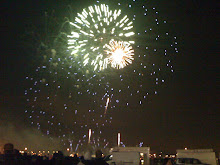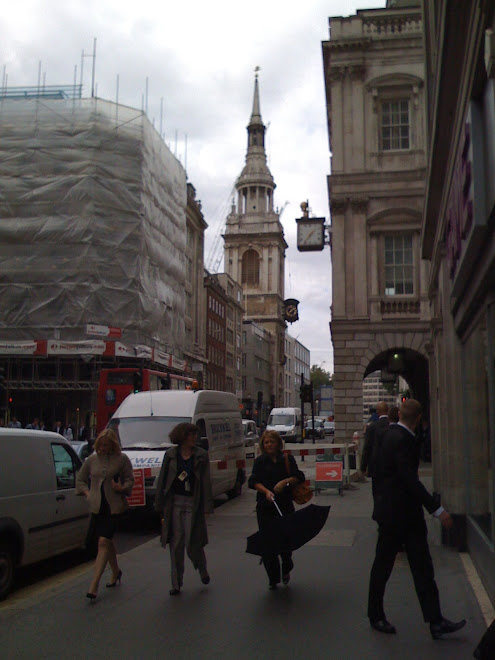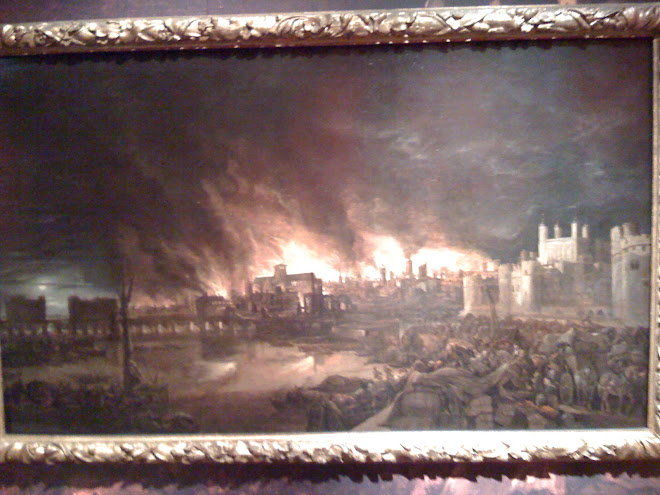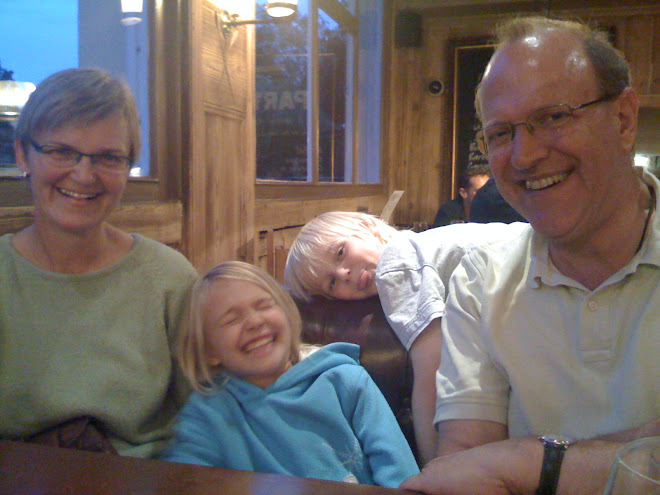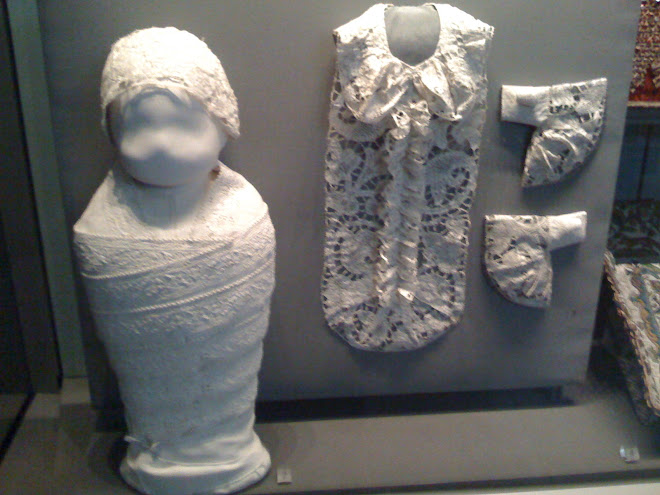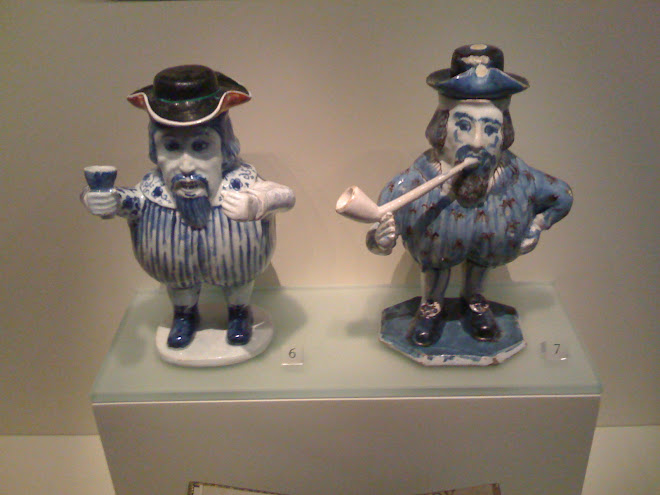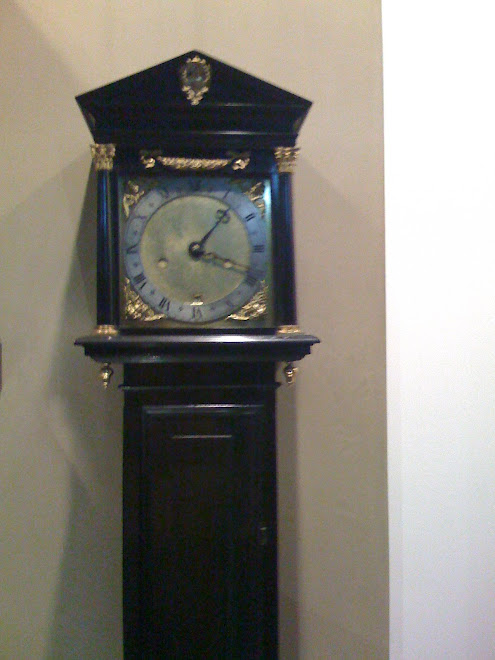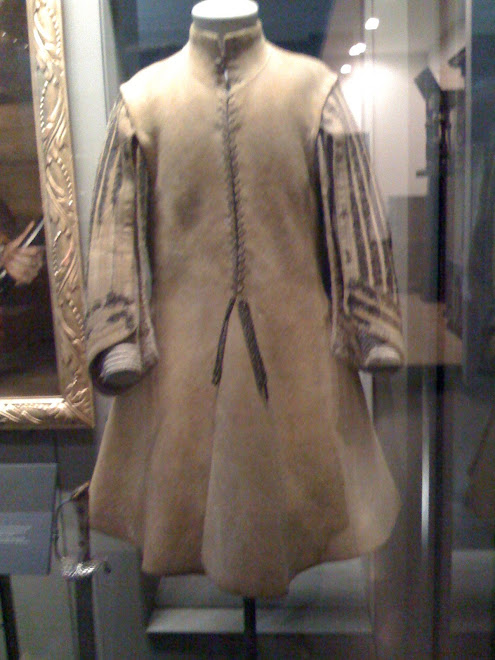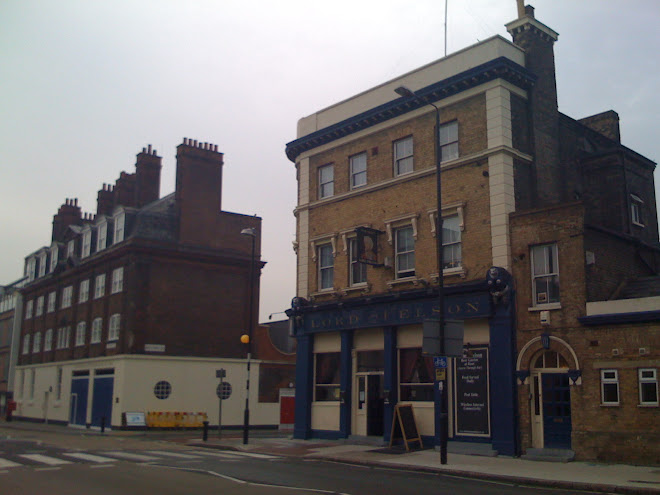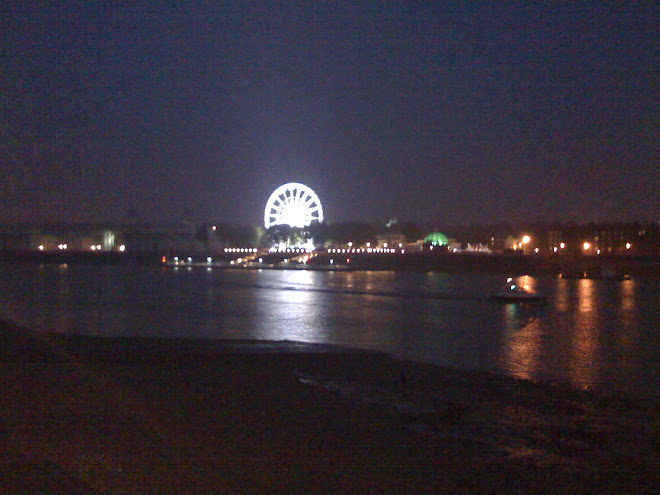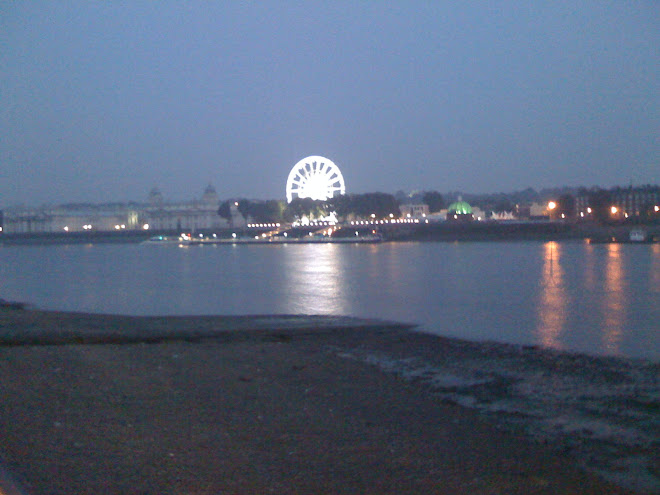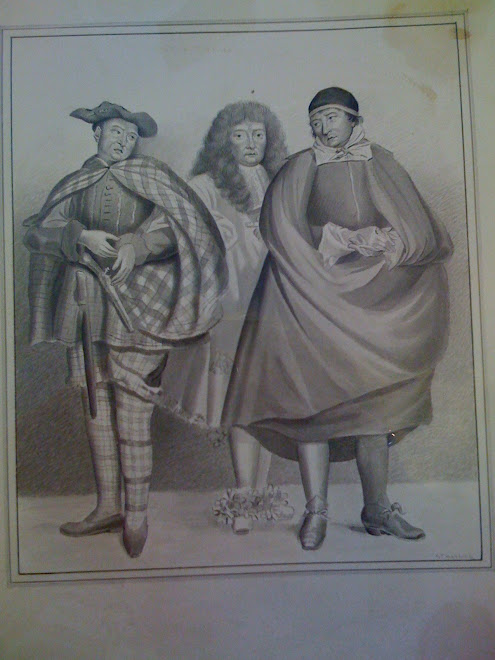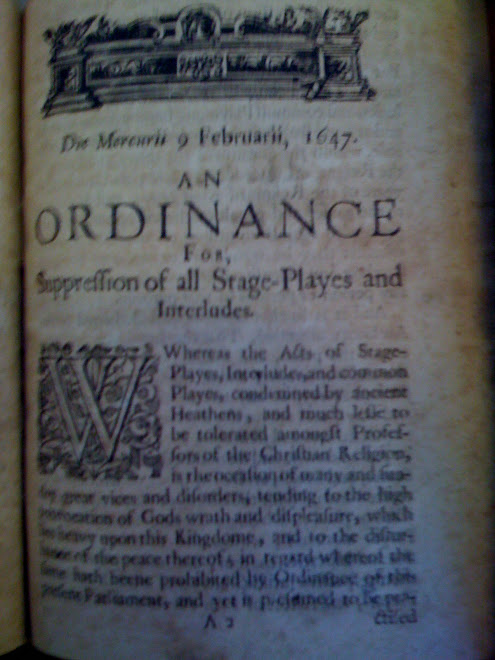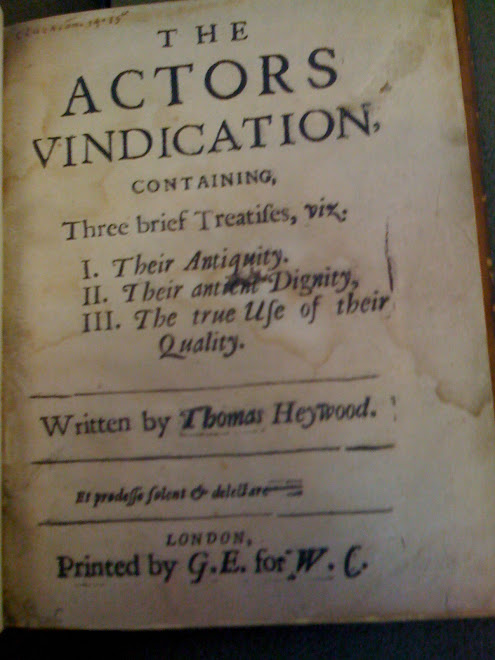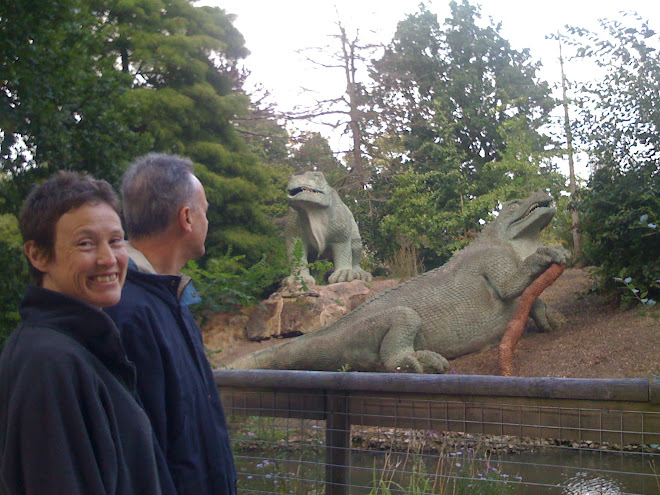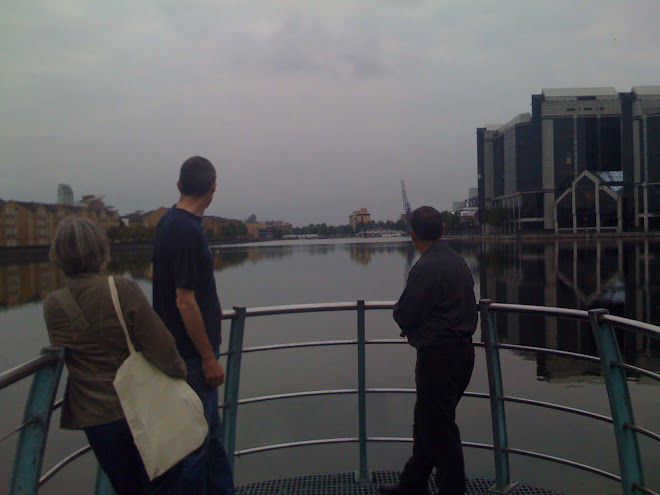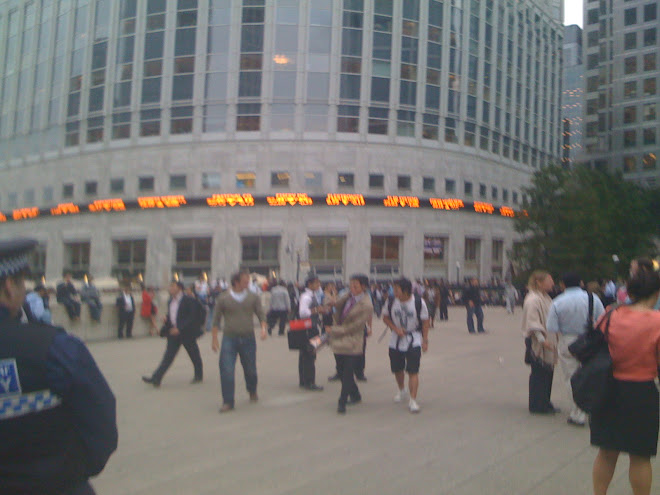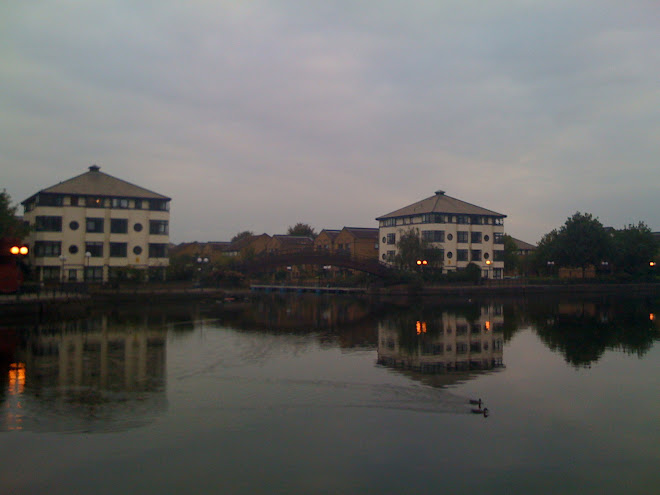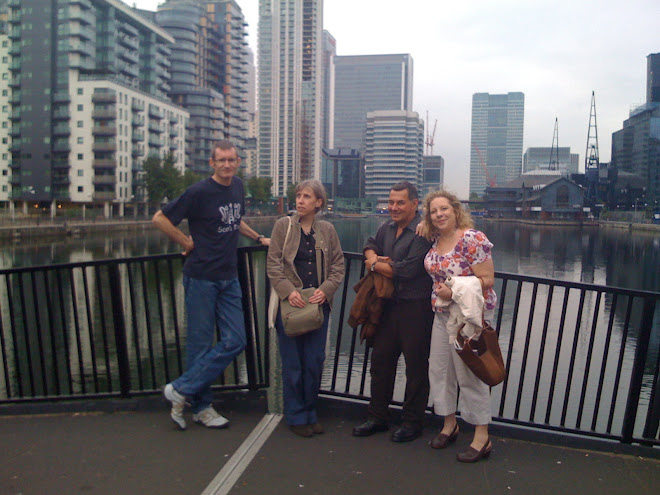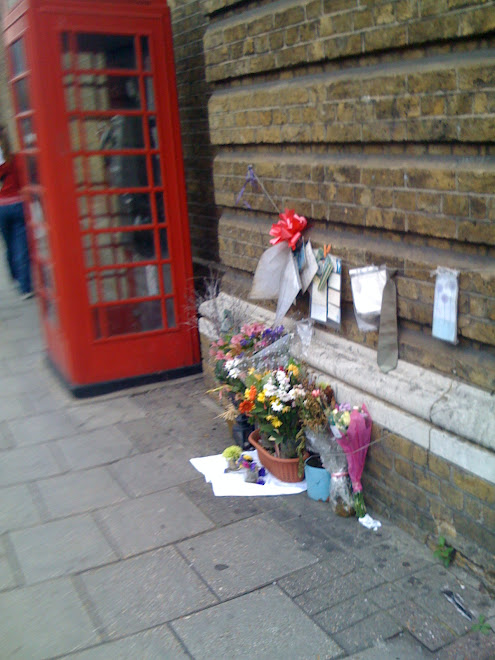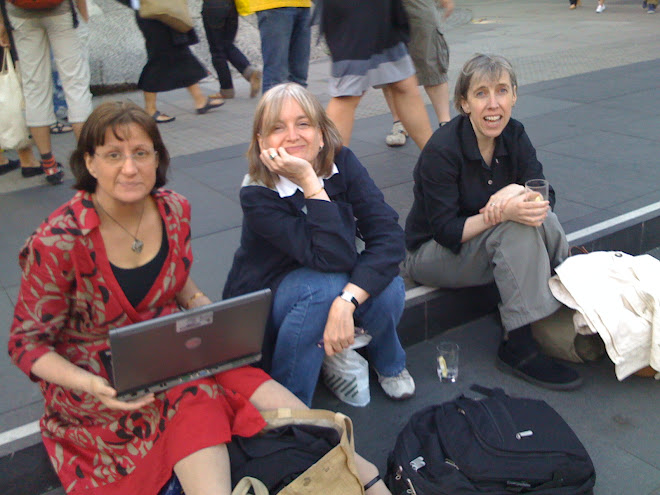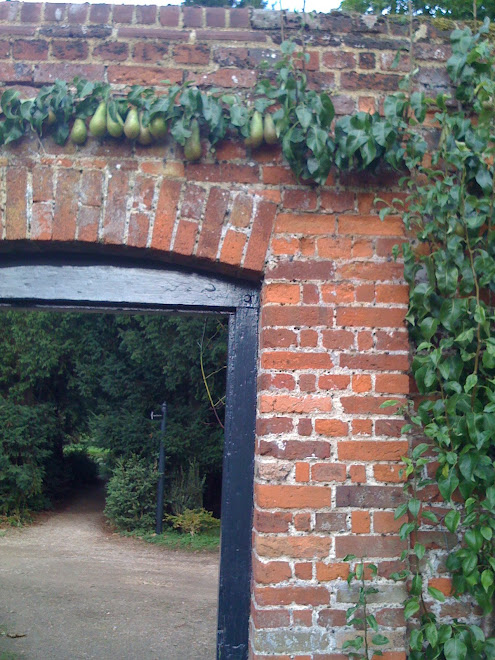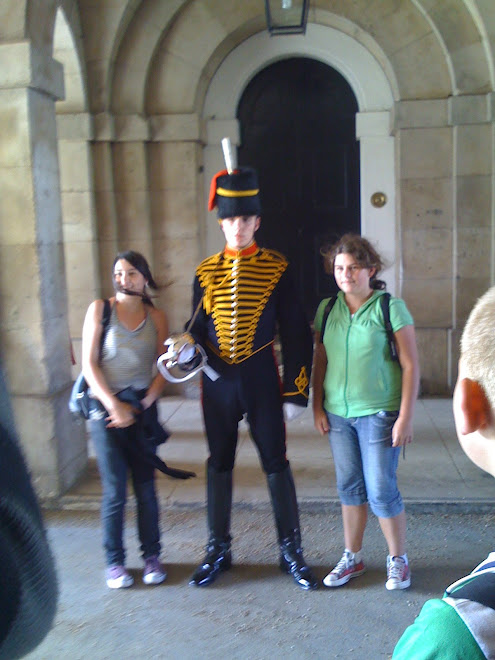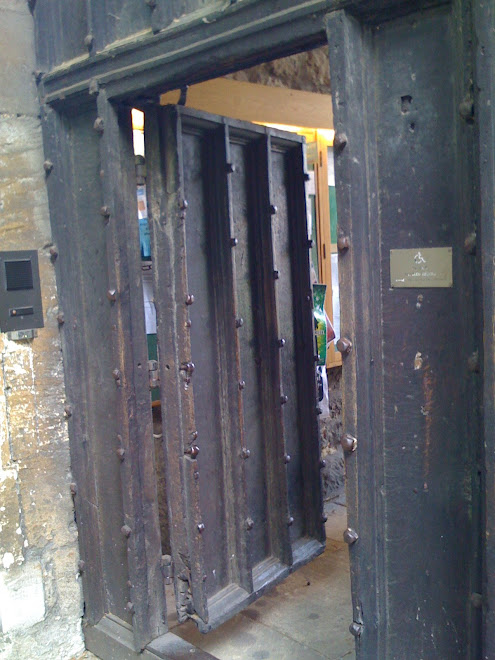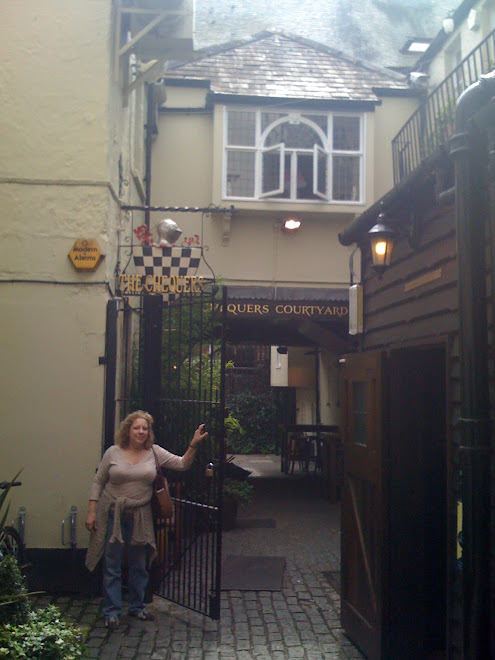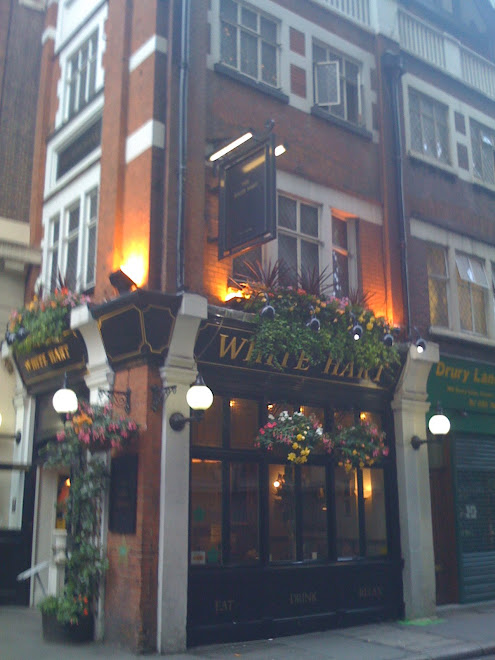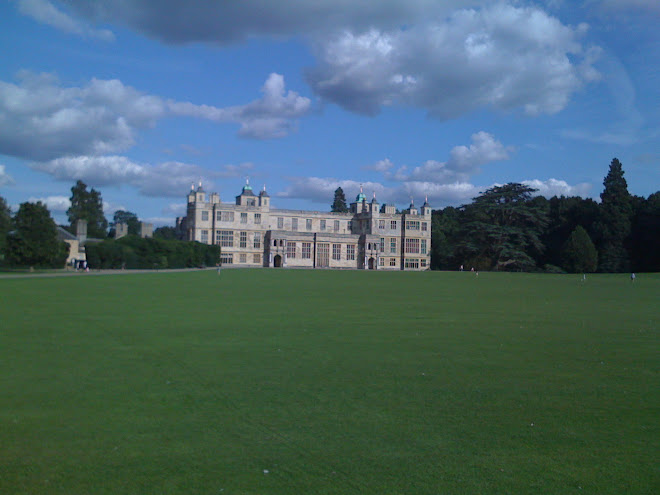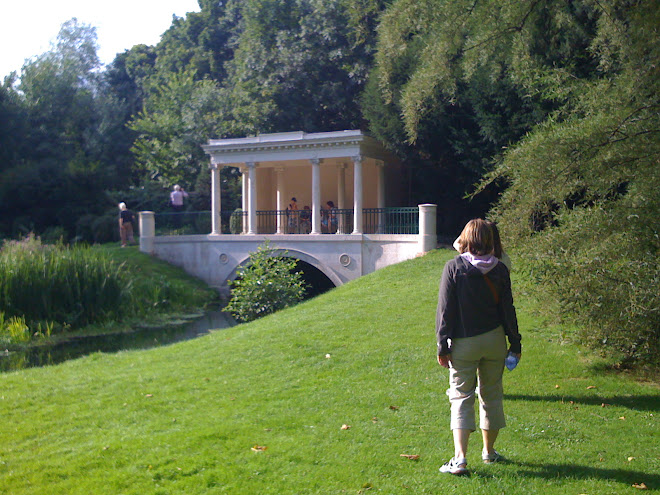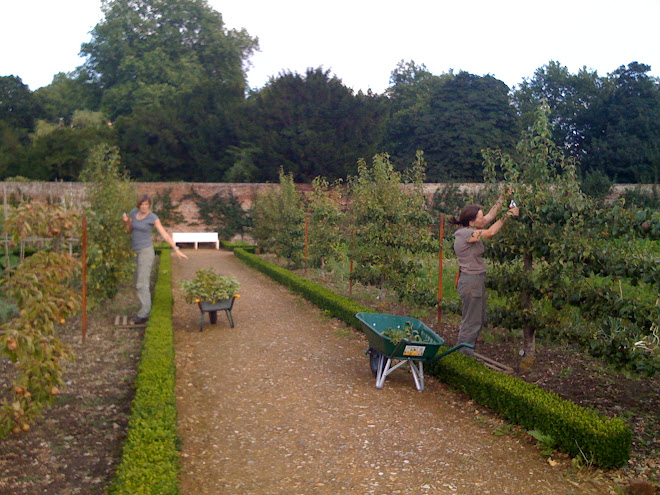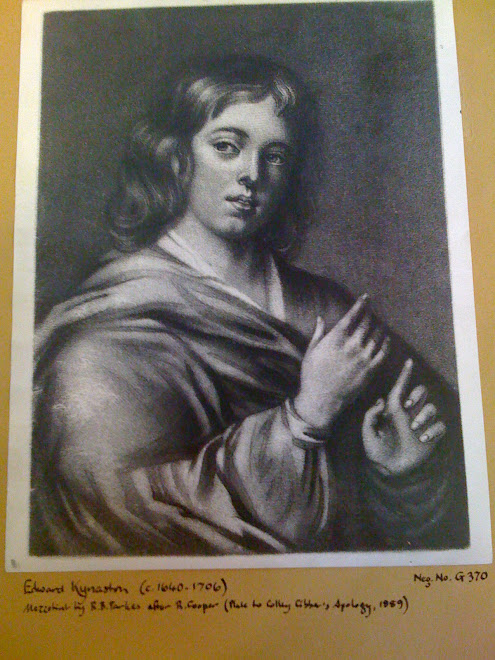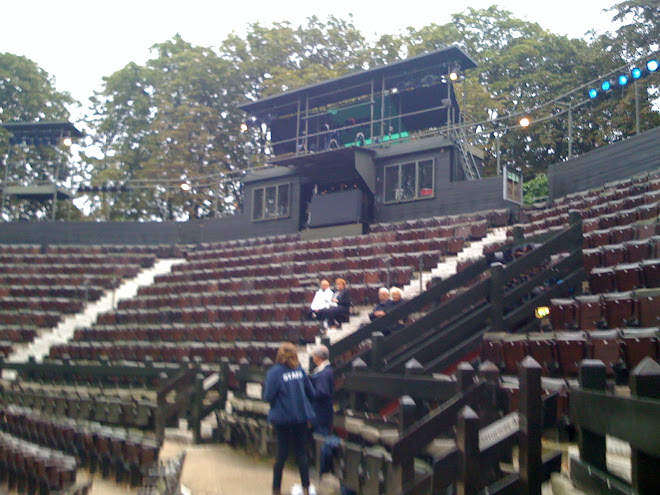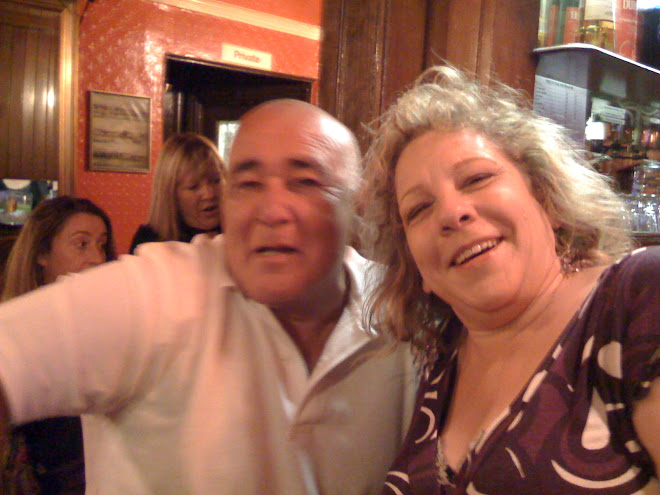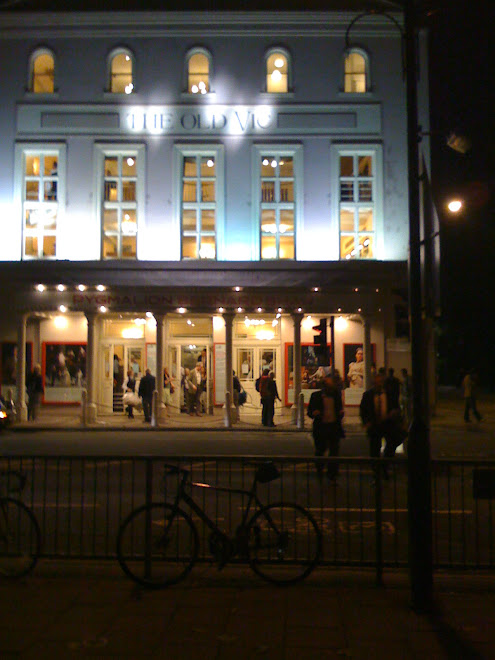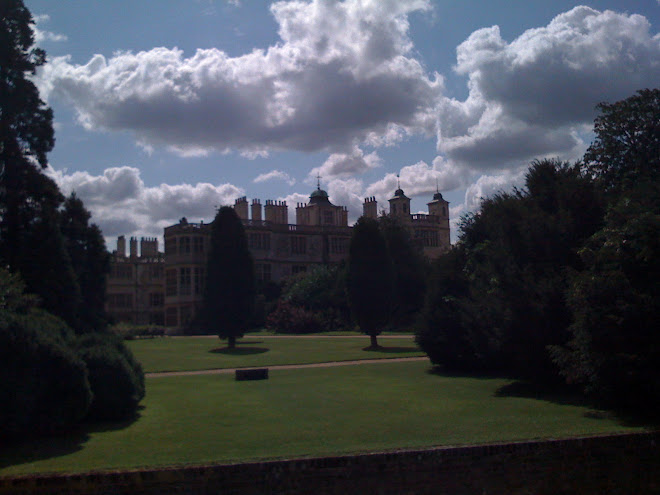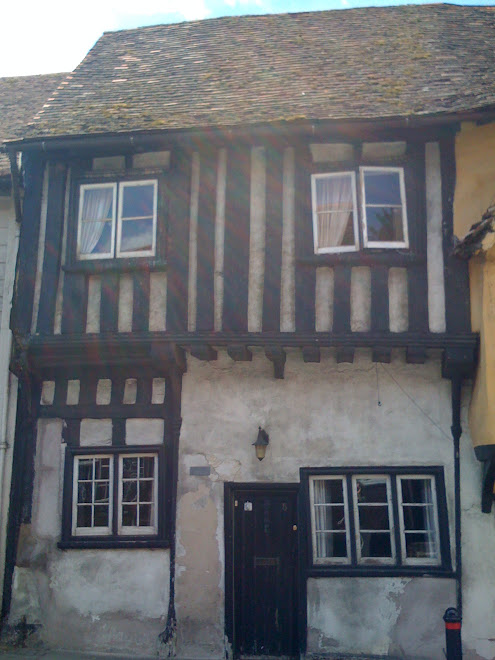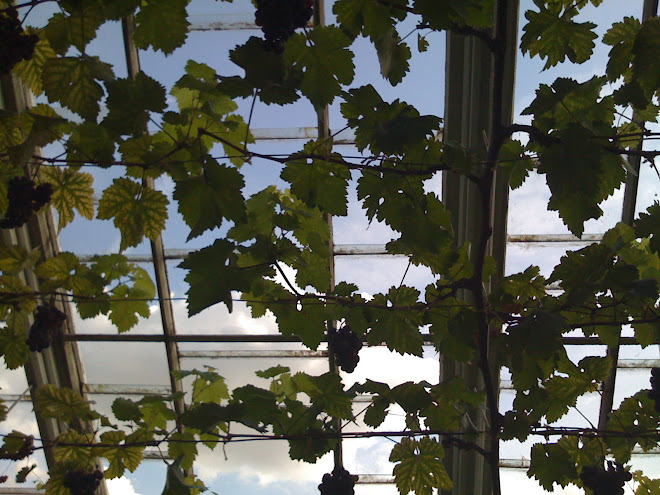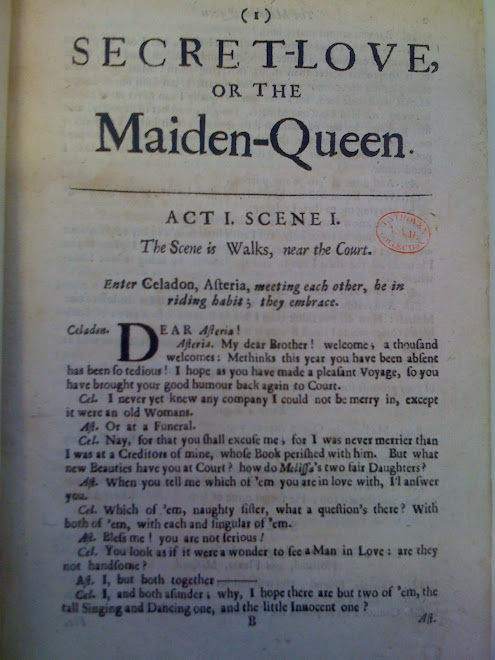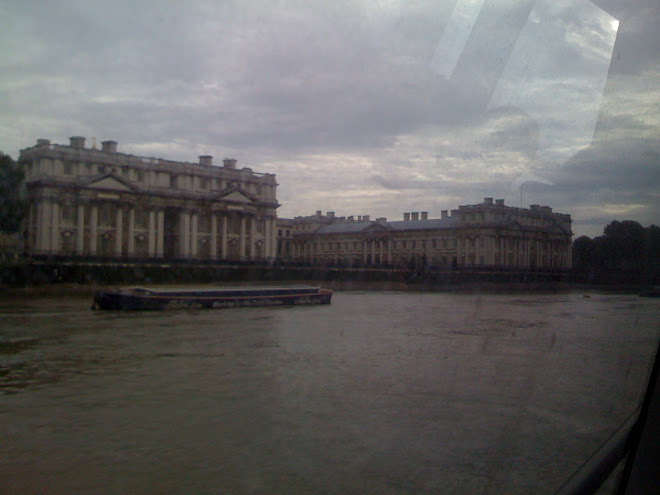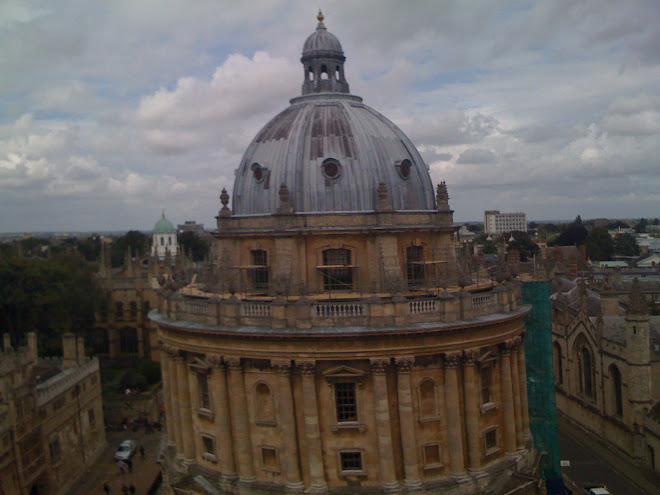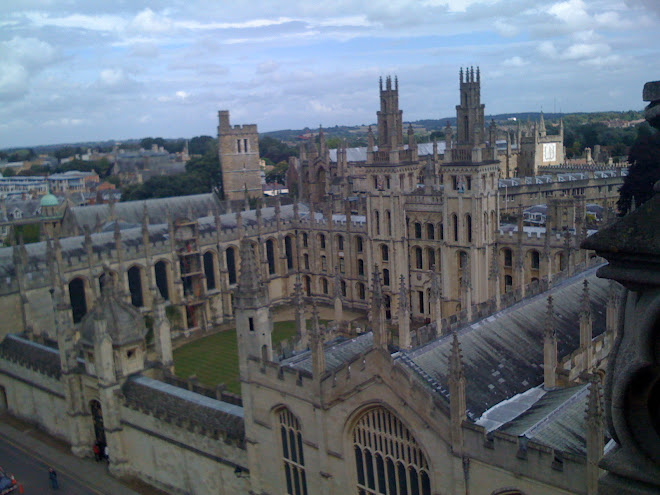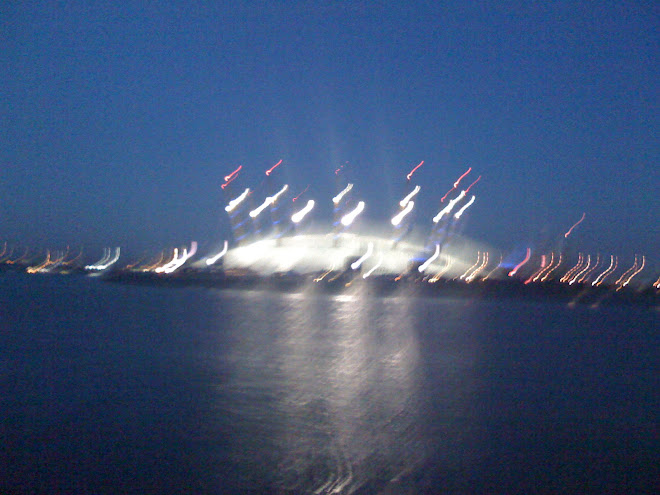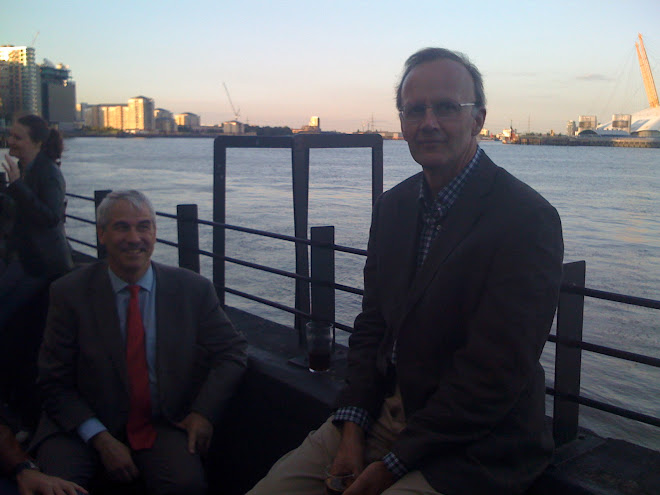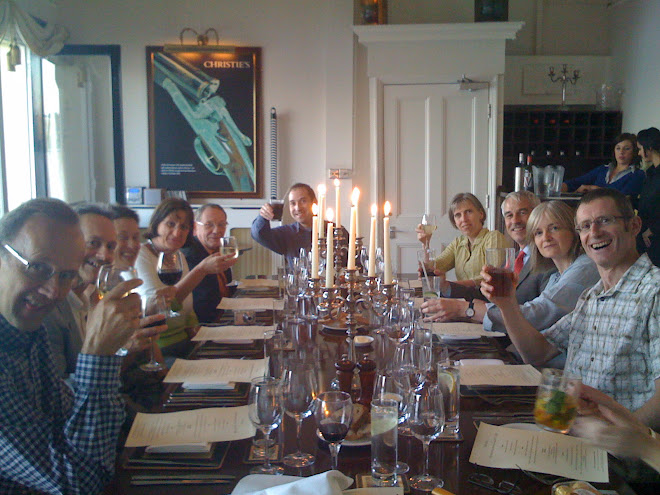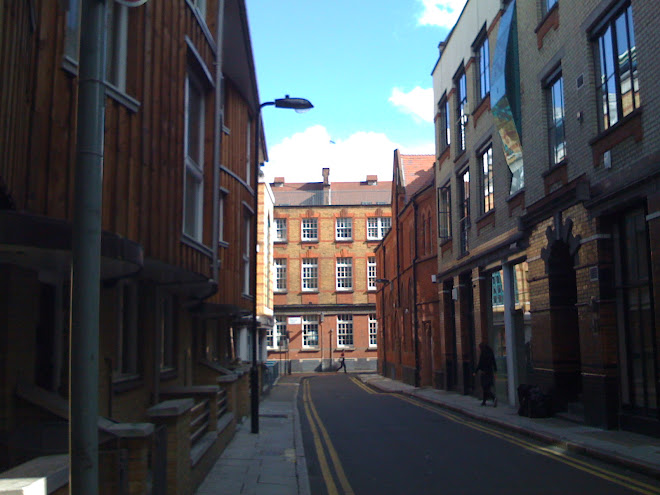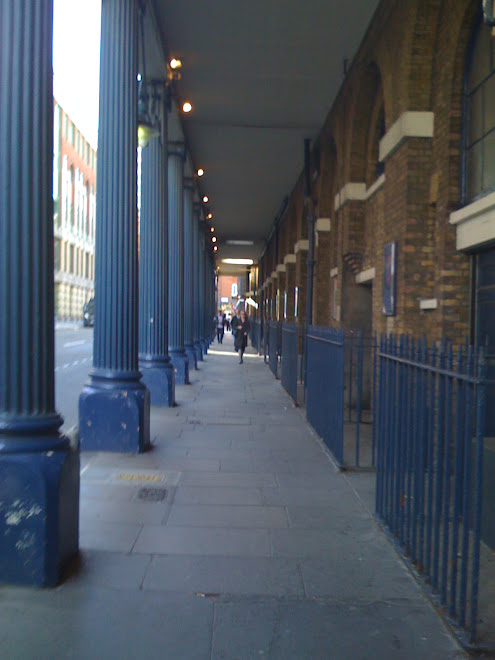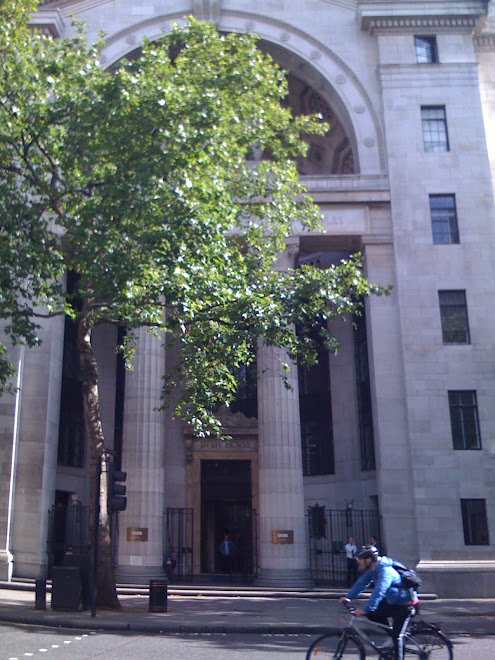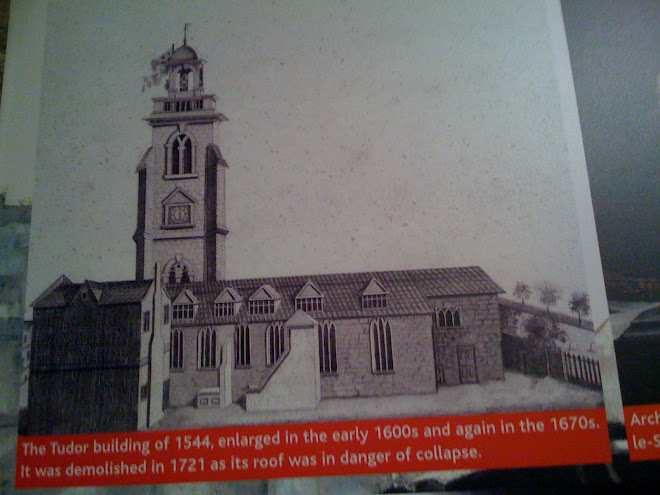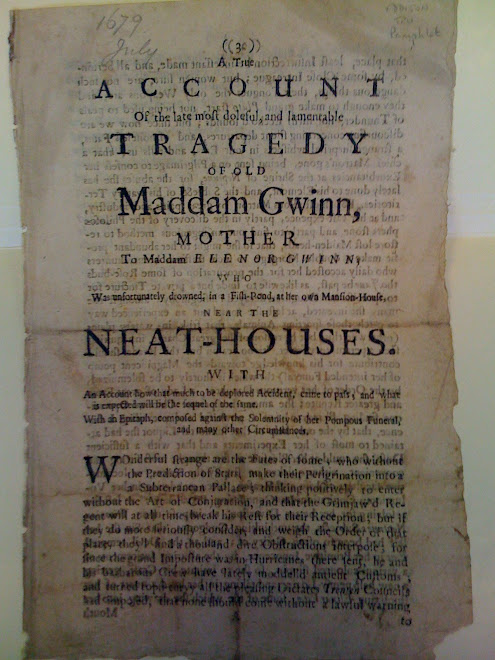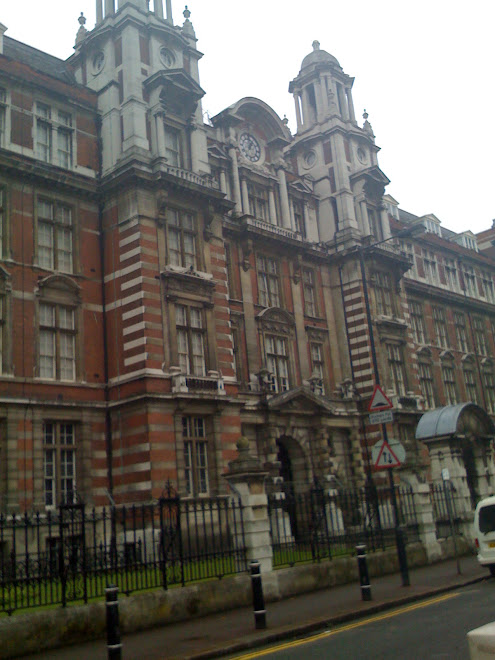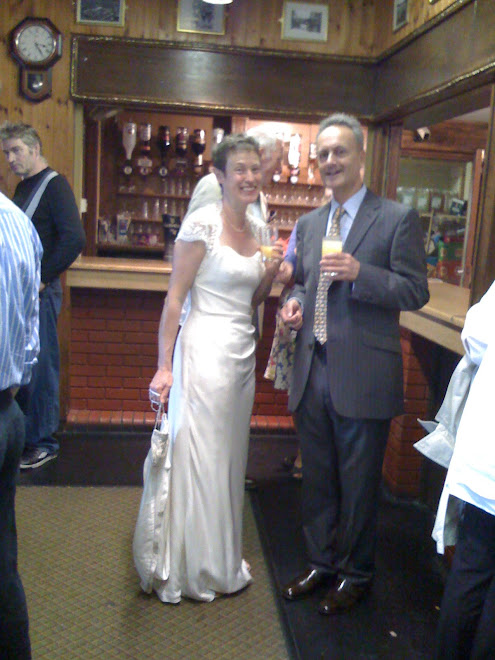On Thursday I went to Westminster Abbey, where the coronation of Charles II took place, as well as that of his brother James II, and all other Kings of England since 1066 except Edward V and Edward VIII, who didn’t have coronations.. The coronation chair built by Edward I was there, which has been used for all coronations since 1308 except that of Mary I.
Nell would not have been at the coronation, but the legend is that she was at Charles’s funeral, standing at the back, and that when everyone else had gone, she laid flowers on his coffin and said her last goodbyes to her lover of seventeen years and the father of her two children.
She may also have been at Westminster Abbey for the christening, and then the sad little funeral a few months later, for the son of her good friend George Villiers, Duke of Buckingham. The baby was Buckingham’s child by his mistress, Anna Maria, Countess of Shrewsbury, whose husband Buckingham had fatally wounded in a duel. Though the baby was illegitimate, Buckingham bestowed on him one of his own hereditary titles, Earl of Coventry. The title wasn’t really his to give, but since the orphaned Buckingham had been taken in by Charles I and raised more or less as a brother to Charles II, perhaps the King didn’t raise a fuss.
Later on Thursday, I went in search of the Red Bull Theatre on St. John Street in Clerkenwell. The theatre, an open air enclosed yard like the Globe, was built in about 1604. It survived the Commonwealth (and some clandestine performances were given there during those years), and in 1660, when Charles authorized the reopening of the theatres, Thomas Killigrew’s King’s Company gave a few performances there before moving to their new home in Lincoln’s Inn Fields.
According to a contemporary map, Red Bull Yard, presumably leading to the playhouse, was located about 100 feet north of Clerkenwell Road. As near as I can determine, this means that the theatre was situated roughly on St. John’s Square, a pleasant open area just behind St. John’s Church. There’s been a church of some kind there for about 900 years, but according to the London Encyclopedia, Elizabeth I gave the use of the buildings to the Master of the Revels, and it appears that the site was not used as a church during the period in which the Red Bull was at its height, so it seems possible that the theatre could have directly adjoined the church. In any case, it was certainly in the area that is currently bounded by St. John’s Street on the east, Albermarle Way on the south, St. John’s Square on the west, and Aylesbury Road on the north. One source says it was in what is now Woodbridge Street, but that seems just a tiny bit too far north.
On Friday, I set out for Lincoln’s Inn Fields, where the first two new theatres opened after the Restoration, and where Nell lived for a time.
The Vere Street Theatre, occupied by the King’s Company, and the Duke’s Company, managed by Sir William Davenant, were in converted tennis courts. This may seem unlikely, but a tennis court was probably an ideal kind of building to use for a playhouse – it would have had a large open area in the center, surrounded by galleries for spectators, and rooms at either end that could be used for dressing rooms and/or a lobby. And in 1660, Lincoln’s Inn Fields had only recently been developed with houses and was a fashionable area.
Sir Thomas Killigrew and the King’s Company opened their theatre first, on Thursday, November 8, 1660, with a performance of “Henry IV, Part One,” in what had been Gibbons’ Tennis Court. It was a fashionable place already, with grounds including a tavern and coach houses. The site is shown on Newcourt’s map of 1658, Hollar’s map of 1657, Lea and Glynne’s map of 1706 and others. The entry was from Vere Street (no longer there, and replaced by Kingsway), and bounded by Duke Street (now Sardinia Street) to the north, Sheffield Street to the south, and Portugal Row to the east.
As with much of London, the current streets lie pretty much as they did centuries ago, and there is still a little plot of land within those bounds, just southwest of the southwest corner of Lincoln’s Inn Fields, which includes the Peacock Theatre, Sardinia House, a pub, and two brick buildings possibly of Victorian vintage, which are identified as St. Philip’s Building South Block and St. Philip’s Building North Block of the London School of Economics. There is a narrow walkway between the two buildings leading to some stairs down into a dank below-ground yard that I think is probably about where the theatre itself stood.
Lisle’s Tennis Court, where the Duke’s Company performed beginning in June 1661, is only about a hundred yards or so from the site of Killigrew’s theatre, on the north side of the T-intersection between Carey Street and Portugal Street. What stands there now is part of the very large building that houses the Royal College of Surgeons. There is a door into the building just at the intersection. A Russian gentleman who saw me taking pictures and asked what was significant about the area told me that that part of the building had been a morgue until 2003, that it had been bought by the London School of Economics (!) and was now used as classrooms, and that it still smelled!
The Earl of Rochester had a house next door to the theatre, and the actors used to drink at the Grange Inn a few yards south of the theatre, presumably in Carey Street. Hollar’s map of 1657 shows the tennis court sticking out into Lincoln’s Inn Fields, the last building on the east end of Portugal Street, and a tiny coach sitting outside the Grange Inn.
There continued to be a theatre on this site for many years. It was there that “The Beggar’s Opera” first played.
In 1669, Charles moved Nell into a house in Newman’s Row, just off the northeast corner of Lincolns’ Inn Fields. Newman’s Row is now barely more than a walkway leading up to Holborn, with a modern building on the east side and construction going on to the west. Now, it joins up with the walkway along the east side of the square. When Nell lived there, however, the street was separated from the square by a swathe of land that on Hollar’s 1658 map appears to be about 100 feet wide or so and with greenery. And the east end of Whetstone Park, an unsavory and crime-plagued narrow street running east to west between Holborn and Lincoln’s Inn Fields, ran into Newman’s Row. So though Nell’s house was technically at Lincoln’s Inn Fields, it wasn’t in the fashionable or best part, and after she bore the King their first son, she talked him into a better house on Pall Mall.
Nell’s house in Newman’s Row was only about a ten-minute walk from the Theatre Royal in Drury Lane and the Covent Garden area, though a world away from the slums north of Covent Garden where she grew up. She only acted in one play after having her first child, but went to plays frequently at both the King’s and the Duke’s Companies.
I walked back to Covent Garden to find some more Nell-related sites. Her mother kept bar, and she also worked, at the Rose and Crown in Russell Street. She would certainly have known Will’s Coffee House, in Bow Street, and the Rose Tavern, in Russell Street next to the Theatre Royal.
Charles Hart, the leading actor of the King’s Company and Nell’s lover and mentor, had lodgings at the northeast intersection of Russell Street and Bridges Street (now Catherine Street), probably roughly where the pub the Marquess of Anglesey sits now.
Also in Drury Lane was the Cockpit, another Jacobean era theatre that survived the Commonwealth and was used for some unauthorized performances during that time. It sat in the roughly triangular area bounded by Drury Lane to the southwest, Green Queen Street to the north, Wild Street to the northeast, and Princes Street (now Kemble Street) to the southeast. As with the other old theatre sites, there is a pub still on the grounds and the layout has probably not changed. The theatre was probably more or less at the site of 141 Drury Lane, where there is now a building occupied by – wait for it – the London School of Economics!
I wandered around the little streets north of Covent Garden, which are now full of fashionable shops, pubs, and restaurants, but in the seventeenth century could be dangerous places. In 1679 the playwright John Dryden was attacked in Rose Street on his way home from Will’s, possibly at the behest of the Earl of Rochester. It’s little more than an alleyway a hundred feet long or so, narrow and twisting, and it would only take an armed man at each end to make it an effective trap.
Next I headed east along the Strand and Fleet Street to find the sites of two more theatres, Salisbury Court and the Dorset Gardens. Salisbury Court was another survivor from the early 17th century, but was an indoor playhouse, and Davenant’s Duke’s Company performed there before moving to Lincoln’s Inn Fields. The theatre would have been roughly where Salisbury Square sits now, a little south of Fleet Street, and on the east side of the KPMG building at No. 8 Salisbury Square, there is a plaque stating that the theatre stood there.
As Salisbury Street runs south, it runs uphill slightly and turns into Dorset Rise, a narrow street that slopes down toward the river. In 1674, the Duke’s Company opened the very grand new Dorset Gardens Theatre, which sat right on the river, due south of St. Bride’s church. Fashionable audiences would have frequently traveled to the theatre by water, and Ogilby and Morgan’s map of 1677 shows boats crowded around the landing steps leading from the water up to the theatre. Their map of 1681-82 labels not only Dorset Stairs as well as the nearby Blackfriars Stairs and Whitefriars Stairs.
This area is much changed from the seventeenth century. Blackfriars Bridge crossed the river from here, Queen Victoria Street leading to Victoria Embankment is a busy street, and there are steps leading down to the equally busy Blackfriars Underpass. But the Dorset Gardens Theatre would have been just about on the site of the very grand building that sits just to the west of 100 Victoria Embankment. It’s probably best viewed from the river.
Well, it's Monday evening and I still haven't caught up and now my buddies are arriving for a last night at the Nelson. So, more to come.
A final note about London today - last Friday I noticed three guards outside the Canary Wharf office of Lehman Brothers, its European headquarters. I passed by about noon today, and guards had been replaced by police - and a whole phalanx of photographers. And yes, unfortunately, I owned some Lehman stock. Good thing I have a pint in front of me, friends around me, and I'm going home tomorrow!
Monday, September 15, 2008
Friday, September 12, 2008
Windsor, Epsom, the Gunmaker’s Lunch, Samuel Pepys, The Lord Nelson Pub Quiz, Lots and Lots of Very Old Maps
Oh, dear, oh, dear – once more I’ve been racing around getting a lot accomplished but not finding the time to write about it! So here goes…
WINDSOR
Last Saturday, Alice and I went to Windsor, where Charles II and his court spent quite a lot of time, and Nell did, too. We found her original Windsor residence, a townhouse a couple of hundred yards outside the castle walls, part of it now occupied by the rather incongruously named Nell Gwynn Chinese Restaurant. (Update, July 21, 2013: I had an email from Rob Abell, who tells me: "I am reliably informed by my Windsor historian friend, Elias Kupfermann, that the Chinese restaurant you refer to has no connections to Nell Gwyn whatsoever. I asked the restaurant to remove their misleading plaque. Unfortunately we have had a number of businesses all claiming to have been home to Nell Gwyn, so have had to sort these out!")
Later, Nell lived in (and in 1680 was given the freehold of) Burford House, a grand house on the palace grounds. Unfortunately, Burford House is a private residence and not open to be viewed, but we did our best by peeking in at the gate that is only about 75 feet from its door. From the upper floors, Nell would have had spectacular views to the southeast over Windsor Great Park, and of the castle and maybe the river looking to the north and west. The pretty and ancient St. John’s Parish church is just across the road from her house.
When Nell and Charles’s younger son James died at the age of eight in June 1680, Charles encouraged her to find solace in redecorating Burford House. They spent the summer in Windsor, and among other things, she commissioned paintings on the ceilings by AntonioVerrio, an Italian who was a favorite among the English upper class and did extensive painting for Windsor Castle, among other places.
The court traveled between Windsor and London by water (Purcell used to write little welcome-home songs for Charles), and Alice and I walked along the banks of the Thames, which is narrow and meandering at that point, its grassy banks overhung by trees, and probably not much changed from Nell’s day. Eton is just over the bridge.
A few streets grew up centuries ago just outside the castle walls, and their layout appears to have remained much the same. On the high street just outside the palace gates there is a grand red brick Guildhall designed by Christopher Wren, and it was there that Prince Charles and Camilla got married in 2005 when it was discovered that if they had a civil service in the castle’s St. George’s Chapel, the chapel would have to be opened for public use as a place to get married! One of my favorite headlines from that week was the local paper’s deadpan “Tetbury Man to Wed.”
EPSOM
On Sunday, Alison drove me to Epsom. In spring 1667, Charles Sackville, Lord Buckhurst was “inflamed” by seeing Nell’s performance in “All Mistaken,” in a breeches role that allowed her to show off her legs. He convinced her to leave the stage, and she went with him and his friend Sir Charles Sedley to Epsom.
Epsom had recently become a fashionable retreat from London for the upper crust, both for the healing qualities of the waters, and because of the newly-introduced racing at Epsom Downs (though it was not until 18th century that the Derby was so named).
Samuel Pepys was staying at the King’s Head next door to where Nell was living with the boys, and commented that they kept “a merry house.” I’ll bet they did. Whatever the arrangements were, they didn’t last long, and by late August Buckhurst had thrown Nell out and she had to slink back to London in shame and ask to be taken back at the theatre.
To my delight, Ye Olde King’s Head is still there, on what is now Church Street, and was formerly the high street of Epsom. It was built in the mid-16th century, and the inn next door, no doubt where Pepys stayed, was built in the early 17th century. It appears that whatever house Nell lived in is probably gone, but the road is quiet and rural, with a church and churchyard across the road, parts of which date from the 12th century, and it’s easy to image what a lovely location it must have been to spend a couple of summer months, especially for Nell, who wouldn’t have had much experience of anything but the noise and crowding of London.
The King’s Head was offering the traditional Sunday lunch, and I was served about half of a lamb with a pile of potatoes; a big dish of carrots, cabbage, broccoli, and parsnips; mint sauce; and gravy. Alison, a veggie, ordered the lunch without the meat, and still had a pile of food, including a Yorkshire pudding.
SAMUEL PEPYS
On Monday, Alice and I went to the church of St. Olave Hart Street for one of a series of lectures that is being given throughout the year on 17th century diarist Samuel Pepys, who headed the Naval Office and knew Nell as well as the King, the Duke of York, and many other prominent people of the time. He lived and worked across from the church in Seething Lane, and is commemorated with a bust in the small Pepys’s Park there.
I was a bit disappointed in the lecture, as there wasn’t much about the subject on which Pepys and Dryden had the most in common – theatre. But it was an interesting evening, and good to see the little church again. There is a monument high on one wall near the pulpit (stage right, so to speak) that Sam had put there when his wife Elizabeth died. The vicar, Oliver Ross, explained that the monument would have been visible to best advantage from the Naval Pew, where Sam sat. The pew is gone, but there is now a monument to Pepys himself in the wall where the exterior door to the upstairs pew would have been located. So when Sam came into the church in life, he was walking through what would later be his own headstone! The vicar also commented that if you stand on something high to get the view of Elizabeth’s monument that Sam would have had, her dress appeared more diaphanous than it does from floor level.
The good vicar was also much interested in the outcome of the presidential election, as are many other Britons, and we commiserated a bit about the prospect of Sarah Palin in the White House.
LUNCHEON AT THE WORSHIPFUL COMPANY OF GUNMAKERS
On Tuesday, I had the pleasure of attending a lunch given by the Worshipful Company of Gunmakers, of which my friend Donna is a liveryman (no liverywomen) by virtue of her work with firearms in her capacity as a senior metal conservator for the Victoria & Albert Museum.
I received a gilt-edged invitation with my name and the details of the event in calligraphy, and a letter with the company’s coat of arms stating that there would be a tour of Proof House before lunch for anyone interested.
A charming man whose bearing made it a sure bet he was ex-military showed us around the premises. I didn’t know quite what to expect (cannons? flintlocks?) but it turns out that the Gunmakers are responsible for proofing, or testing, the fireworthiness of all guns and firearms in Britain – including every weapon used by the armed forces. So hundreds of thousands of modern automatic weapons go through Proof House, and they are also responsible for the modern equivalent of cannons, artillery and ship-mounted guns.
The Gunmakers also prove civilian arms, such as rifles and shotguns for hunting. An interesting piece of information is that it is legal to be carrying a firearm as long as you are on your way to or from taking it to Proof House to be tested! Also, the Gunmakers at Proof House are entitled to carry any firearm at any time, without a special license!
We were shown the testing chambers, where weapons are placed to be fired remotely into bullet-catchers. I got to do the honors of pulling a string outside the door and firing a 12-bore, which produced an enormous bang and a satisfyingly smoky room when the door was opened.
The clerk summoned us from champagne on the courtyard by banging a gavel and calling us in, and the company (about twenty people, including only one other woman besides Donna and me) sat down the long table. The room was hung with the coats of arms of past masters of the Gunmakers. The masters of the Salters’ and Blacksmiths’ companies were also present, they, like the master of the Gunmakers’ wearing elaborate badges of office on ribbons around their necks. I felt like Nell must have done, surrounded by a rather august crowd of London’s elite and mostly grey-haired gentlemen. Though as I have previously commented, though I am not one of them, I probably seemed - and felt - less out of place than an East Ender with a Cockney accent would.
I felt even more like Nell must have done in an exchange with one of the gents. In response to his jocular comment that though I probably couldn’t believe it, he was over 60, I said surely he couldn’t be more than 29. He delightedly exclaimed “Oh, good girl!” and gave my thigh a hearty squeeze.
The food was great, and the wine flowed – champagne, white wine, red wine, more white wine, dessert wine, and port served with the various courses. So I staggered back to Tim’s, where I’m staying now until I leave, and slept for a couple of hours.
Woke up in time to be more or less sober for quiz night at the Lord Nelson pub. When I was here in 2005-2006, I had a group of friends that coalesced around the weekly pub quiz, which we used to win on a regular basis (partly due to Donna’s formidable body of knowledge). This kind of quiz, involving trivia, science, sports, music, etc., is quite popular here. It was a great night, just like old times, with Alison, Donna, and me there for the beginning, Tim joining us partway through the quiz, and Alice coming by in time for the announcement that we had won, taking the L50 total of contestants’ one-pound entry fees.
I was especially pleased to see Spencer, who managed the Nelson during most of the time that I was here, and who, with co-quiz master John, came up with some pretty entertaining quizzes, including the legendary “During the war” round, with both of them dressed as old duffers in cloth caps and mufflers and puffing on pipes. Spencer doesn’t work at the Nelson anymore, so he was free to hang out, which we did until closing time.
When I was here before, I kept being baffled by how drunk I got on what didn’t seem a like very many beers. Then I realized that I had been thinking of “a beer” in terms of a 12-ounce American bottle. But in England I was drinking 20-ounce pints, and with a higher alcohol content than American beer. So “a beer” had roughly twice the kick I was used to.
THE BRITISH LIBRARY AND LOTS OF MAPS
On Wednesday I spent the afternoon in the Maps Reading Room at the British Library. My plans for research there were almost scuppered by having lost my wallet, including my driver’s license, a couple of weeks ago, since to get a reader’s pass, they require two different forms of ID to establish signature and address. Fortunately, though, they relented and gave me a week-long pass on the basis of my passport and a checkbook..
You can access the catalogue of materials on-line, either at the library or from afar, and request the materials you want to see. So I had quite a pile of original 17th century maps waiting for me, some in books, some in rolls, some folded into leather cases, some in giant portfolios. I’d seen some of them before, reproduced in books, but it was great to be able to look at the originals.
I wanted to get copies of some maps, and have been able to order a pretty satisfactory selection, but unfortunately, it wasn’t practical to get full copies of the big versions of two of the maps that I most wanted, because of their size and delicacy: Newcourt and Faithorne’s “An Exact Delineation of the Cities of London and Westminster and the Suburbs Thereof, Together with ye Burrough of Southwark and all the Through-Fares, Highwaies, Streetes, Lanes & Allies Within ye Same,” published in 1658, and the 1677 “A Large and Accurate Map of the City of London ichnographically describing all the streets, lanes, alleys, courts, yards, churches, halls and houses, &c., actually surveyed and delineated by John Ogilby, Esq., His Majesties Cosmographer.” The Newcourt map was a single sheet about 4 feet by 6 feet, and Ogilby’s is two sections, each of them comprised of about 25 or 30 pages of about 8x10 inches fitted together on a canvas backing, the whole thing folding to fit into a custom-made box.
I left the British Library with my head a bit too full of tiny pictures of houses and streets, and went to the National Portrait Gallery, which includes a couple of rooms of paintings of Charles II and his family, ministers, cronies, and other contemporaries. The only picture of Nell on display is not a very good one, but there is a great portrait of her hated rival Louise de Keroualle, Duchess of Portsmouth, and another of Charles’s other main mistress, Barbara Palmer, Duchess of Cleveland, posed rather blasphemously with her oldest illegitimate son by Charles as the Madonna and child. Nearby are also Samuel Pepys, James II (then Duke of York), the unfortunate James, Duke of Monmouth, Charles II’s oldest illegitimate son, who joined in an ill-advised plot to put him on the throne and died because of it, a galaxy of other people Nell would have known.
The National Portrait Gallery has computer terminals where you can search for portraits in their collection, and can print out black and white copies for free, or order color prints of varying sizes if you want to pay for them.
I went home by way of the “River Bus,” the commuter clipper that travels up and down the river. The civilized way to commute! And related to my research, as the river was a primary mode of travel in Nell’s time. I got on the boat at the Embankment Pier, very close to the location of the Privy Stairs, where Nell would have embarked to get to Charles’s apartments.
Alright. Enough for today. I’ll try to get up to date and post some pictures tomorrow!
WINDSOR
Last Saturday, Alice and I went to Windsor, where Charles II and his court spent quite a lot of time, and Nell did, too. We found her original Windsor residence, a townhouse a couple of hundred yards outside the castle walls, part of it now occupied by the rather incongruously named Nell Gwynn Chinese Restaurant. (Update, July 21, 2013: I had an email from Rob Abell, who tells me: "I am reliably informed by my Windsor historian friend, Elias Kupfermann, that the Chinese restaurant you refer to has no connections to Nell Gwyn whatsoever. I asked the restaurant to remove their misleading plaque. Unfortunately we have had a number of businesses all claiming to have been home to Nell Gwyn, so have had to sort these out!")
Later, Nell lived in (and in 1680 was given the freehold of) Burford House, a grand house on the palace grounds. Unfortunately, Burford House is a private residence and not open to be viewed, but we did our best by peeking in at the gate that is only about 75 feet from its door. From the upper floors, Nell would have had spectacular views to the southeast over Windsor Great Park, and of the castle and maybe the river looking to the north and west. The pretty and ancient St. John’s Parish church is just across the road from her house.
When Nell and Charles’s younger son James died at the age of eight in June 1680, Charles encouraged her to find solace in redecorating Burford House. They spent the summer in Windsor, and among other things, she commissioned paintings on the ceilings by AntonioVerrio, an Italian who was a favorite among the English upper class and did extensive painting for Windsor Castle, among other places.
The court traveled between Windsor and London by water (Purcell used to write little welcome-home songs for Charles), and Alice and I walked along the banks of the Thames, which is narrow and meandering at that point, its grassy banks overhung by trees, and probably not much changed from Nell’s day. Eton is just over the bridge.
A few streets grew up centuries ago just outside the castle walls, and their layout appears to have remained much the same. On the high street just outside the palace gates there is a grand red brick Guildhall designed by Christopher Wren, and it was there that Prince Charles and Camilla got married in 2005 when it was discovered that if they had a civil service in the castle’s St. George’s Chapel, the chapel would have to be opened for public use as a place to get married! One of my favorite headlines from that week was the local paper’s deadpan “Tetbury Man to Wed.”
EPSOM
On Sunday, Alison drove me to Epsom. In spring 1667, Charles Sackville, Lord Buckhurst was “inflamed” by seeing Nell’s performance in “All Mistaken,” in a breeches role that allowed her to show off her legs. He convinced her to leave the stage, and she went with him and his friend Sir Charles Sedley to Epsom.
Epsom had recently become a fashionable retreat from London for the upper crust, both for the healing qualities of the waters, and because of the newly-introduced racing at Epsom Downs (though it was not until 18th century that the Derby was so named).
Samuel Pepys was staying at the King’s Head next door to where Nell was living with the boys, and commented that they kept “a merry house.” I’ll bet they did. Whatever the arrangements were, they didn’t last long, and by late August Buckhurst had thrown Nell out and she had to slink back to London in shame and ask to be taken back at the theatre.
To my delight, Ye Olde King’s Head is still there, on what is now Church Street, and was formerly the high street of Epsom. It was built in the mid-16th century, and the inn next door, no doubt where Pepys stayed, was built in the early 17th century. It appears that whatever house Nell lived in is probably gone, but the road is quiet and rural, with a church and churchyard across the road, parts of which date from the 12th century, and it’s easy to image what a lovely location it must have been to spend a couple of summer months, especially for Nell, who wouldn’t have had much experience of anything but the noise and crowding of London.
The King’s Head was offering the traditional Sunday lunch, and I was served about half of a lamb with a pile of potatoes; a big dish of carrots, cabbage, broccoli, and parsnips; mint sauce; and gravy. Alison, a veggie, ordered the lunch without the meat, and still had a pile of food, including a Yorkshire pudding.
SAMUEL PEPYS
On Monday, Alice and I went to the church of St. Olave Hart Street for one of a series of lectures that is being given throughout the year on 17th century diarist Samuel Pepys, who headed the Naval Office and knew Nell as well as the King, the Duke of York, and many other prominent people of the time. He lived and worked across from the church in Seething Lane, and is commemorated with a bust in the small Pepys’s Park there.
I was a bit disappointed in the lecture, as there wasn’t much about the subject on which Pepys and Dryden had the most in common – theatre. But it was an interesting evening, and good to see the little church again. There is a monument high on one wall near the pulpit (stage right, so to speak) that Sam had put there when his wife Elizabeth died. The vicar, Oliver Ross, explained that the monument would have been visible to best advantage from the Naval Pew, where Sam sat. The pew is gone, but there is now a monument to Pepys himself in the wall where the exterior door to the upstairs pew would have been located. So when Sam came into the church in life, he was walking through what would later be his own headstone! The vicar also commented that if you stand on something high to get the view of Elizabeth’s monument that Sam would have had, her dress appeared more diaphanous than it does from floor level.
The good vicar was also much interested in the outcome of the presidential election, as are many other Britons, and we commiserated a bit about the prospect of Sarah Palin in the White House.
LUNCHEON AT THE WORSHIPFUL COMPANY OF GUNMAKERS
On Tuesday, I had the pleasure of attending a lunch given by the Worshipful Company of Gunmakers, of which my friend Donna is a liveryman (no liverywomen) by virtue of her work with firearms in her capacity as a senior metal conservator for the Victoria & Albert Museum.
I received a gilt-edged invitation with my name and the details of the event in calligraphy, and a letter with the company’s coat of arms stating that there would be a tour of Proof House before lunch for anyone interested.
A charming man whose bearing made it a sure bet he was ex-military showed us around the premises. I didn’t know quite what to expect (cannons? flintlocks?) but it turns out that the Gunmakers are responsible for proofing, or testing, the fireworthiness of all guns and firearms in Britain – including every weapon used by the armed forces. So hundreds of thousands of modern automatic weapons go through Proof House, and they are also responsible for the modern equivalent of cannons, artillery and ship-mounted guns.
The Gunmakers also prove civilian arms, such as rifles and shotguns for hunting. An interesting piece of information is that it is legal to be carrying a firearm as long as you are on your way to or from taking it to Proof House to be tested! Also, the Gunmakers at Proof House are entitled to carry any firearm at any time, without a special license!
We were shown the testing chambers, where weapons are placed to be fired remotely into bullet-catchers. I got to do the honors of pulling a string outside the door and firing a 12-bore, which produced an enormous bang and a satisfyingly smoky room when the door was opened.
The clerk summoned us from champagne on the courtyard by banging a gavel and calling us in, and the company (about twenty people, including only one other woman besides Donna and me) sat down the long table. The room was hung with the coats of arms of past masters of the Gunmakers. The masters of the Salters’ and Blacksmiths’ companies were also present, they, like the master of the Gunmakers’ wearing elaborate badges of office on ribbons around their necks. I felt like Nell must have done, surrounded by a rather august crowd of London’s elite and mostly grey-haired gentlemen. Though as I have previously commented, though I am not one of them, I probably seemed - and felt - less out of place than an East Ender with a Cockney accent would.
I felt even more like Nell must have done in an exchange with one of the gents. In response to his jocular comment that though I probably couldn’t believe it, he was over 60, I said surely he couldn’t be more than 29. He delightedly exclaimed “Oh, good girl!” and gave my thigh a hearty squeeze.
The food was great, and the wine flowed – champagne, white wine, red wine, more white wine, dessert wine, and port served with the various courses. So I staggered back to Tim’s, where I’m staying now until I leave, and slept for a couple of hours.
Woke up in time to be more or less sober for quiz night at the Lord Nelson pub. When I was here in 2005-2006, I had a group of friends that coalesced around the weekly pub quiz, which we used to win on a regular basis (partly due to Donna’s formidable body of knowledge). This kind of quiz, involving trivia, science, sports, music, etc., is quite popular here. It was a great night, just like old times, with Alison, Donna, and me there for the beginning, Tim joining us partway through the quiz, and Alice coming by in time for the announcement that we had won, taking the L50 total of contestants’ one-pound entry fees.
I was especially pleased to see Spencer, who managed the Nelson during most of the time that I was here, and who, with co-quiz master John, came up with some pretty entertaining quizzes, including the legendary “During the war” round, with both of them dressed as old duffers in cloth caps and mufflers and puffing on pipes. Spencer doesn’t work at the Nelson anymore, so he was free to hang out, which we did until closing time.
When I was here before, I kept being baffled by how drunk I got on what didn’t seem a like very many beers. Then I realized that I had been thinking of “a beer” in terms of a 12-ounce American bottle. But in England I was drinking 20-ounce pints, and with a higher alcohol content than American beer. So “a beer” had roughly twice the kick I was used to.
THE BRITISH LIBRARY AND LOTS OF MAPS
On Wednesday I spent the afternoon in the Maps Reading Room at the British Library. My plans for research there were almost scuppered by having lost my wallet, including my driver’s license, a couple of weeks ago, since to get a reader’s pass, they require two different forms of ID to establish signature and address. Fortunately, though, they relented and gave me a week-long pass on the basis of my passport and a checkbook..
You can access the catalogue of materials on-line, either at the library or from afar, and request the materials you want to see. So I had quite a pile of original 17th century maps waiting for me, some in books, some in rolls, some folded into leather cases, some in giant portfolios. I’d seen some of them before, reproduced in books, but it was great to be able to look at the originals.
I wanted to get copies of some maps, and have been able to order a pretty satisfactory selection, but unfortunately, it wasn’t practical to get full copies of the big versions of two of the maps that I most wanted, because of their size and delicacy: Newcourt and Faithorne’s “An Exact Delineation of the Cities of London and Westminster and the Suburbs Thereof, Together with ye Burrough of Southwark and all the Through-Fares, Highwaies, Streetes, Lanes & Allies Within ye Same,” published in 1658, and the 1677 “A Large and Accurate Map of the City of London ichnographically describing all the streets, lanes, alleys, courts, yards, churches, halls and houses, &c., actually surveyed and delineated by John Ogilby, Esq., His Majesties Cosmographer.” The Newcourt map was a single sheet about 4 feet by 6 feet, and Ogilby’s is two sections, each of them comprised of about 25 or 30 pages of about 8x10 inches fitted together on a canvas backing, the whole thing folding to fit into a custom-made box.
I left the British Library with my head a bit too full of tiny pictures of houses and streets, and went to the National Portrait Gallery, which includes a couple of rooms of paintings of Charles II and his family, ministers, cronies, and other contemporaries. The only picture of Nell on display is not a very good one, but there is a great portrait of her hated rival Louise de Keroualle, Duchess of Portsmouth, and another of Charles’s other main mistress, Barbara Palmer, Duchess of Cleveland, posed rather blasphemously with her oldest illegitimate son by Charles as the Madonna and child. Nearby are also Samuel Pepys, James II (then Duke of York), the unfortunate James, Duke of Monmouth, Charles II’s oldest illegitimate son, who joined in an ill-advised plot to put him on the throne and died because of it, a galaxy of other people Nell would have known.
The National Portrait Gallery has computer terminals where you can search for portraits in their collection, and can print out black and white copies for free, or order color prints of varying sizes if you want to pay for them.
I went home by way of the “River Bus,” the commuter clipper that travels up and down the river. The civilized way to commute! And related to my research, as the river was a primary mode of travel in Nell’s time. I got on the boat at the Embankment Pier, very close to the location of the Privy Stairs, where Nell would have embarked to get to Charles’s apartments.
Alright. Enough for today. I’ll try to get up to date and post some pictures tomorrow!
Thursday, September 4, 2008
Fashion and Fire
Today I had a research appointment at the Museum of London (museumoflondon.org.uk), which I'd really been looking forward to. Hilary Davidson, Curator of Fashion and Decorative Arts, had pulled out several items of dress from Nell's lifetime (though not actually associated with her) - two pairs of stays (corsets, basically), a bodice front, two pairs of gloves, three pairs of shoes, a hat, three little gaming purses, two men's buff coats, and some beautiful pieces of lace. They were all carefully wrapped and padded, laid away in boxes, and displayed on a covered table, and Hilary handled them gently with gloves on. I was allowed to take pictures, but had to agree not to publish any, not even on my humble little blog!
Nevertheless, it was amazing to see up close actual surviving pieces of clothing from the mid to late 17th century. Seeing the inside of a set of stays stained by sweat and dirt brings the wearer so close you can almost feel her. I could imagine Nell being enchanted by a tiny purse with little red hearts woven into its fabric, a pair of soft leather gloves decorated with a deep fringe of looped carnation-colored ribbon, a pair of red velvet mules elaborately embroidered with real silver, and with a heel in a style that has become fashionable again.
One of the most striking pieces was one of the buff coats. I included a picture yesterday of a buff coat from the V&A collection - a plain one, like soldiers would wear. This coat was a different creature altogether. The leather was finer and softer, and it was elegantly tailored, with flaring coat-tails, slitted for a sword hilt. The sleeves, facings, and pockets were heavily worked with silver, in a pattern that Hilary remarked had Eastern influences. Perhaps the wearer had just returned from a Grand Tour and wanted something exotic.
Two other people were conducting research while I was there -- Ninya Mikhaila and Jane Malcolm-Davies, authors of The Tudor Tailor: Reconstructing Sixteenth Century Dress (tudortailor.com). They're at work on their next book, focusing on less grand, day-to-day clothes of the period. They had laid out a sailor's linen smock, stained brown with tar and age, and a giant tray of flat brown caps, which they refer to as "cowpat caps." They're apparently cataloguing all of them, and there seem to be more than you would think! While I was there they finished with one set of about six or eight and helped bring out the next large cloth-lined drawer of more, including one tiny and unbearably cute one for a little baby.
I commented that I bet they would get a lot of business from Renaisance Faire participants, and they said that yes, a lot of their sales did come from the U.S. and particulary California. They were amused to hear that I'd spent many years working Renaissance Faires and had spent almost as much time in sixteenth century clothes as twentieth. Almost.
I also walked through the rest of the museum, which includes day-to-day objects and information about the daily lives of Londoners through the millenia. Much of the museum is closed for renovations right now (and I just got in under the wire with the costumes; in two weeks they won't be accessible for several months), so the main display only went up to 1666. But that's good, because it's smack in the middle of my period.
Fortuitously, the museum also has a special exhibit right now called "London Burning," about the Great Fire of London, which burned from September 2-5, 1666. So there I was, right in the middle of the 342nd anniversary of the fire. There were objects from the period, reproductions of paintings of the fire, maps of the damaged areas, prints of the various proposed rebuilding plans, a fireman's helmet of the period (looking astonishingly like what firemen still wear), and much more.
Particularly nice was a little soundscape, featuring ballads of the period, one about the Rump Parliament and the return of Charles II, and the other about the fire being divine retribution for sinfulness, as well as the cries of street peddlars.
To get to the museum, I walked from the Bank underground station west along Mansion House, Poultry, Cheapside, and Newgate Street, and then up St. Martin Le Grand. I walked that route hundreds of times when I was here before because it was also the way to St. Bartholomew's Hospital, where my mother spent a lot of time. There's been a hospital there since 1123, and some of it has even been rebuilt since then!
Cheapside is one of the oldest of London's streets, and the streets branching off it - Bread Street, Honey Lane, and the nearby Poultry - reflect the area's long history as a market place ("cheap" means a market). St. Paul's Cathedral is just south of where Cheapside turns into Newgate Street. Further east along Cheapside stands the church of St. Mary le Bow. The present building, built 1671-1673, with its steeple completed in 1680, is one of 51 churches that were designed by Christopher Wren, and built to replace those burned in the Great Fire. You can see pictures of them at http://www.flickr.com/photos/stevecadman/sets/72157594356228263.) The saying that a true Cockney is someone born within the sound of Bow Bells refers to this church. Of course its bells would have been audible much further away before the city got quite so loud.
Nevertheless, it was amazing to see up close actual surviving pieces of clothing from the mid to late 17th century. Seeing the inside of a set of stays stained by sweat and dirt brings the wearer so close you can almost feel her. I could imagine Nell being enchanted by a tiny purse with little red hearts woven into its fabric, a pair of soft leather gloves decorated with a deep fringe of looped carnation-colored ribbon, a pair of red velvet mules elaborately embroidered with real silver, and with a heel in a style that has become fashionable again.
One of the most striking pieces was one of the buff coats. I included a picture yesterday of a buff coat from the V&A collection - a plain one, like soldiers would wear. This coat was a different creature altogether. The leather was finer and softer, and it was elegantly tailored, with flaring coat-tails, slitted for a sword hilt. The sleeves, facings, and pockets were heavily worked with silver, in a pattern that Hilary remarked had Eastern influences. Perhaps the wearer had just returned from a Grand Tour and wanted something exotic.
Two other people were conducting research while I was there -- Ninya Mikhaila and Jane Malcolm-Davies, authors of The Tudor Tailor: Reconstructing Sixteenth Century Dress (tudortailor.com). They're at work on their next book, focusing on less grand, day-to-day clothes of the period. They had laid out a sailor's linen smock, stained brown with tar and age, and a giant tray of flat brown caps, which they refer to as "cowpat caps." They're apparently cataloguing all of them, and there seem to be more than you would think! While I was there they finished with one set of about six or eight and helped bring out the next large cloth-lined drawer of more, including one tiny and unbearably cute one for a little baby.
I commented that I bet they would get a lot of business from Renaisance Faire participants, and they said that yes, a lot of their sales did come from the U.S. and particulary California. They were amused to hear that I'd spent many years working Renaissance Faires and had spent almost as much time in sixteenth century clothes as twentieth. Almost.
I also walked through the rest of the museum, which includes day-to-day objects and information about the daily lives of Londoners through the millenia. Much of the museum is closed for renovations right now (and I just got in under the wire with the costumes; in two weeks they won't be accessible for several months), so the main display only went up to 1666. But that's good, because it's smack in the middle of my period.
Fortuitously, the museum also has a special exhibit right now called "London Burning," about the Great Fire of London, which burned from September 2-5, 1666. So there I was, right in the middle of the 342nd anniversary of the fire. There were objects from the period, reproductions of paintings of the fire, maps of the damaged areas, prints of the various proposed rebuilding plans, a fireman's helmet of the period (looking astonishingly like what firemen still wear), and much more.
Particularly nice was a little soundscape, featuring ballads of the period, one about the Rump Parliament and the return of Charles II, and the other about the fire being divine retribution for sinfulness, as well as the cries of street peddlars.
To get to the museum, I walked from the Bank underground station west along Mansion House, Poultry, Cheapside, and Newgate Street, and then up St. Martin Le Grand. I walked that route hundreds of times when I was here before because it was also the way to St. Bartholomew's Hospital, where my mother spent a lot of time. There's been a hospital there since 1123, and some of it has even been rebuilt since then!
Cheapside is one of the oldest of London's streets, and the streets branching off it - Bread Street, Honey Lane, and the nearby Poultry - reflect the area's long history as a market place ("cheap" means a market). St. Paul's Cathedral is just south of where Cheapside turns into Newgate Street. Further east along Cheapside stands the church of St. Mary le Bow. The present building, built 1671-1673, with its steeple completed in 1680, is one of 51 churches that were designed by Christopher Wren, and built to replace those burned in the Great Fire. You can see pictures of them at http://www.flickr.com/photos/stevecadman/sets/72157594356228263.) The saying that a true Cockney is someone born within the sound of Bow Bells refers to this church. Of course its bells would have been audible much further away before the city got quite so loud.
Wednesday, September 3, 2008
Cambridge and the V&A Museum
On Monday, September 1, I made a trip by train to Cambridge, to have dinner with someone who was very important to my mother in the last couple of years of her life, and in mine while I was here caring for her - her vicar, Martin Seeley.
He was formerly the vicar of Christ Church here on the Island, and while my mother didn't know him until she was too ill to go to his church, he visited her regularly at home, in hospitals, the nursing home, and the hospice, as well as giving her the last rites the night before she died and performing her funeral service. And he was a shoulder for me to lean on more than once when the fear and sadness and loneliness were overwhelming.
Two years ago Martin and his family moved to Cambridge because he had been sought after and hired for a very prestigious new post, as head of a school connected with the university. So now he is The Reverend Canon Martin A. Seeley, President, Westcott House, Jesus Lane, Cambridge!
I had only briefly crossed paths with Martin's wife Jutte (sorry - I'm only guessing at the spelling), who is also a minister, and their charming children, Anna and Luke. We had a lovely dinner (courtesy of my generous Uncle Al) at Fort St. George, a pub right on the bank of the River Cam, and on the evocatively named Midsummer Common.
Before dinner, I spent a couple of hours walking around the old streets of Cambridge and marveling at the ancient colleges (Trinity was centuries old when Samuel Pepys went there in the 17th century) but certainly didn't give it the time it deserved.
After dinner, Martin showed me the chapel and grounds of Jesus College, where he had been an undergraduate, and walked me to where I could get the bus to the train station.
It was great to see Martin and his family, and yes, there is a Nell Gwynn connection. In the last few years of her life, Nell became friends with Thomas Tenison, then vicar of St. Martin in the Fields, and later Archbishop of Canterbury. He helped her make charitable donations (usually anonymously); attended her friend James, Duke of Monmouth, at his hideously botched execution; visited, counseled, and comforted Nell when she had had two strokes and was dying (possibly from syphilis); and gave her funeral service at St. Martin in the Fields.
I told Martin I'd value his advice and input on what Dr. Tenison would have told Nell in those later years. She certainly didn't have any religious upbringing and her life, though nothing out of the ordinary by the standards of Charles II's court, wasn't quite in keeping with what was respectable by Christian standards. The death of her youngest son James at the age of eight must have shaken her world and made her think about the afterlife and her own life as she had never done before. And the years following were no easier, as a succession of her closest friends died, finally followed by the King, to whom she had been a faithful lover for seventeen years and borne two children.
I also told Martin about my search for Nell's grave at St. Martin in the Fields. He asked if I knew the vicar there. Um, no, I haven't had the pleasure. And he kindly offered to put me in touch!
Today I met my friend Donna for lunch at the Victoria and Albert Museum, where she is a senior metal conservator, and then I spent the afternoon going through the British Gallery, with furniture, household items, clothes, paintings, sculpture, and technology from the seventeenth century; and then looking at glass and silver from the same time. I already know a fair amount about daily life during Nell's lifetime, but there is nothing quite like seeing the actual suit that Charles II's brother James, the Duke of York (and later James II), wore at his wedding, or a delicate leather fan of the period with an inctricate landscape painted on it, or feeling samples of the rope support and various layers of mattresses and covers that a bed in a wealthy household of the period would have had.
He was formerly the vicar of Christ Church here on the Island, and while my mother didn't know him until she was too ill to go to his church, he visited her regularly at home, in hospitals, the nursing home, and the hospice, as well as giving her the last rites the night before she died and performing her funeral service. And he was a shoulder for me to lean on more than once when the fear and sadness and loneliness were overwhelming.
Two years ago Martin and his family moved to Cambridge because he had been sought after and hired for a very prestigious new post, as head of a school connected with the university. So now he is The Reverend Canon Martin A. Seeley, President, Westcott House, Jesus Lane, Cambridge!
I had only briefly crossed paths with Martin's wife Jutte (sorry - I'm only guessing at the spelling), who is also a minister, and their charming children, Anna and Luke. We had a lovely dinner (courtesy of my generous Uncle Al) at Fort St. George, a pub right on the bank of the River Cam, and on the evocatively named Midsummer Common.
Before dinner, I spent a couple of hours walking around the old streets of Cambridge and marveling at the ancient colleges (Trinity was centuries old when Samuel Pepys went there in the 17th century) but certainly didn't give it the time it deserved.
After dinner, Martin showed me the chapel and grounds of Jesus College, where he had been an undergraduate, and walked me to where I could get the bus to the train station.
It was great to see Martin and his family, and yes, there is a Nell Gwynn connection. In the last few years of her life, Nell became friends with Thomas Tenison, then vicar of St. Martin in the Fields, and later Archbishop of Canterbury. He helped her make charitable donations (usually anonymously); attended her friend James, Duke of Monmouth, at his hideously botched execution; visited, counseled, and comforted Nell when she had had two strokes and was dying (possibly from syphilis); and gave her funeral service at St. Martin in the Fields.
I told Martin I'd value his advice and input on what Dr. Tenison would have told Nell in those later years. She certainly didn't have any religious upbringing and her life, though nothing out of the ordinary by the standards of Charles II's court, wasn't quite in keeping with what was respectable by Christian standards. The death of her youngest son James at the age of eight must have shaken her world and made her think about the afterlife and her own life as she had never done before. And the years following were no easier, as a succession of her closest friends died, finally followed by the King, to whom she had been a faithful lover for seventeen years and borne two children.
I also told Martin about my search for Nell's grave at St. Martin in the Fields. He asked if I knew the vicar there. Um, no, I haven't had the pleasure. And he kindly offered to put me in touch!
Today I met my friend Donna for lunch at the Victoria and Albert Museum, where she is a senior metal conservator, and then I spent the afternoon going through the British Gallery, with furniture, household items, clothes, paintings, sculpture, and technology from the seventeenth century; and then looking at glass and silver from the same time. I already know a fair amount about daily life during Nell's lifetime, but there is nothing quite like seeing the actual suit that Charles II's brother James, the Duke of York (and later James II), wore at his wedding, or a delicate leather fan of the period with an inctricate landscape painted on it, or feeling samples of the rope support and various layers of mattresses and covers that a bed in a wealthy household of the period would have had.
Sunday, August 31, 2008
Isle of Dogs and Greenwich
Last night Jackie and I walked over to the Elephant Royale, right on the river and just behind where I used to live, and had lovely Thai dinner on the terrace. The view to Greenwich was lovely, in daylight, twilight, and dark.
Nell Gwynn almost certainly went to Greenwich. Charles II built an observatory there shortly after his restoration, which is still there, and still the location of the meridien from which Greenwich Mean Time originates. He also made improvements to the extensive royal park there.
There had been a palace at Greenwich for at least a couple of centuries. Henry VIII and Elizabeth I were born there, and it was there that Henry VIII signed the death warrant for Anne Boleyn. By the time of Charles II it was either gone or in poor repair, and he began building a new palace, but only got as far as one building, now referred to as the Charles II building, and part of what later became the Royal Naval College.
One of the stories as to how the Isle of Dogs got its name was that Henry VIII and other monarchs kept their hunting packs there.
Supposedly, Charles II was planning to grant Nell's wish to be ennobled and was planning to make her the Countess of Greenwich when he died, but alas, it never happened. I wonder if she really wanted it?
This morning I walked through the 1903 foot tunnel from this side of the river to Greenwich and spent a pleasant couple of hours at the little flea market and the covered market.
Nell Gwynn almost certainly went to Greenwich. Charles II built an observatory there shortly after his restoration, which is still there, and still the location of the meridien from which Greenwich Mean Time originates. He also made improvements to the extensive royal park there.
There had been a palace at Greenwich for at least a couple of centuries. Henry VIII and Elizabeth I were born there, and it was there that Henry VIII signed the death warrant for Anne Boleyn. By the time of Charles II it was either gone or in poor repair, and he began building a new palace, but only got as far as one building, now referred to as the Charles II building, and part of what later became the Royal Naval College.
One of the stories as to how the Isle of Dogs got its name was that Henry VIII and other monarchs kept their hunting packs there.
Supposedly, Charles II was planning to grant Nell's wish to be ennobled and was planning to make her the Countess of Greenwich when he died, but alas, it never happened. I wonder if she really wanted it?
This morning I walked through the 1903 foot tunnel from this side of the river to Greenwich and spent a pleasant couple of hours at the little flea market and the covered market.
Saturday, August 30, 2008
Around the island and walking with dinosaurs
Last Monday, which was a bank holiday here, Laura and her new husband David picked me up and we drove over to Crystal Palace Park, south of the river. The enormous glass, iron and wood structure that was built for the great Crystal Palace Exhibition in London in 1851 was later moved here, where it remained until it burned down in 1936. (For some pictures and information about the structure and exhibit, see http://www.st-andrews.ac.uk/~city19c/viccity/crystal1.html and http://en.wikipedia.org/wiki/The_Crystal_Palace).
Life-sized (well, maybe not quite life-sized, but big!) plaster replicas of dinosaurs were commissioned and were part of the exhibit, and they are still around the grounds of the park, along with models of more modern animals - elk, tapirs, etc. The palace was on a hill, and standing atop it you get sweeping views of the countryside to the south (the city falls away and greenery takes over pretty quickly once you're outside Greater London) and to the north, where you can see the City, with St. Paul's and the modern office building nicknamed The Gherkin.
Last night, my friends Tim, Alice, Alison and I met my friend Bucky outside the Canary Wharf station for a tour of the Island, dinner, and a visit to the local. Bucky runs the theatre program at the London branch of the American School in St. John's Wood, and spends more time around Americans than around Brits, and had been to the Isle of Dogs only a few times, and then only to Canary Wharf.
From the first years of the 19th century until the 1960's, the Isle of Dogs was home to London's major ports. When container shipping took hold, the docks gradually fell into disuse, leaving acres of derelict buildings and massive unemployment. In the early 1990s, an adventurous financier built Canada Tower, Britain's tallest building, hoping to create a new commerical center. At first it sat largely empty, but soon business took off. The publishing industry, long located at and sometimes simply referred to as "Fleet Street," moved to Canary Wharf, as did other businesses. Now there are many skyscrapers with housing Citibank, Barclay's, and other international corporations, with luxury flats and hotels. When I asked a cab driver to take me to the Isle of Dogs, he said, "Oh, the Isle of Money." But it's not all like that.
We walked to South Quay and then around the docks to near Millwall and the Mudchute DLR station, and then cut through Mudchute Farm and Millwall Park. Tim said that Mudchute is the largest farm inside a city. I think! There are allotments, or community garden plots, as well as sheep, cows, goats and other farm animals. The Mudchute is so named because when the second set of docks were being built in the mid-19th century, the excavated dirt was thrown up into a berm alongside the channel - and there it remains. It's a lovely oasis of green.
Donna met us at Memsaheb, my favorite Indian restaurant here, right on the river, and had a great meal, then walked along the river back to my old neighborhood. The Observatory in Greenwich projects a green laser beam along the meridien line, which shoots hot and bright in the dark above the river. We went for a drink at the Lord Nelson put, my old haunt. The Nelson's been there since about 1850, and for decades was a dockies' pub, catering to the dockworkers that were the Island's main population from about 1800 to 1900 or so.
The southwest quadrant of the Island, especially, still has a very neighborhoody feel, with many dockers' cottages that were built in the late 19th and early 20th centuries. The area along the river was heavily industrial from the second half of the 19th century, and was badly bombed during the World War II, with many civilian deaths. Now most of the river front has newer upscale flats. But in other places, there are still many people whose families have lived on the Island for years.
I really enjoyed living in this neighborhood when I was here for almost a year and a half two years ago caring for my mother. Since there are only two ways onto the Isle of Dogs by car (Blackwall Tunnel at the northeast and the Limehouse Link at the northwest), it's a lot more quiet and laid back than central London.
If you look at maps showing the Island up until the beginning of the 19th century, there isn't much there. A road around the perimeter, and one leading up the center of the horseshoe-shaped peninsula, with a ferry house at the foot of the island, near where the roads intersect, and a chapel house partway up the north-south middle road.
I lived where that north-south road, Eastferry Road, intersects the perimeter road, which is Westferry Road on the west and Manchester Road on the east. A couple hundred feet away, closer to the water, was the site of the ferry to Greenwich, which was there at least since the 14th century. Samuel Pepys got stuck there for a day, trying to get to a wedding south of the river. For all that time, there has always been a public house near the site, though the current Ferry House pub is only about 200 years old.
Life-sized (well, maybe not quite life-sized, but big!) plaster replicas of dinosaurs were commissioned and were part of the exhibit, and they are still around the grounds of the park, along with models of more modern animals - elk, tapirs, etc. The palace was on a hill, and standing atop it you get sweeping views of the countryside to the south (the city falls away and greenery takes over pretty quickly once you're outside Greater London) and to the north, where you can see the City, with St. Paul's and the modern office building nicknamed The Gherkin.
Last night, my friends Tim, Alice, Alison and I met my friend Bucky outside the Canary Wharf station for a tour of the Island, dinner, and a visit to the local. Bucky runs the theatre program at the London branch of the American School in St. John's Wood, and spends more time around Americans than around Brits, and had been to the Isle of Dogs only a few times, and then only to Canary Wharf.
From the first years of the 19th century until the 1960's, the Isle of Dogs was home to London's major ports. When container shipping took hold, the docks gradually fell into disuse, leaving acres of derelict buildings and massive unemployment. In the early 1990s, an adventurous financier built Canada Tower, Britain's tallest building, hoping to create a new commerical center. At first it sat largely empty, but soon business took off. The publishing industry, long located at and sometimes simply referred to as "Fleet Street," moved to Canary Wharf, as did other businesses. Now there are many skyscrapers with housing Citibank, Barclay's, and other international corporations, with luxury flats and hotels. When I asked a cab driver to take me to the Isle of Dogs, he said, "Oh, the Isle of Money." But it's not all like that.
We walked to South Quay and then around the docks to near Millwall and the Mudchute DLR station, and then cut through Mudchute Farm and Millwall Park. Tim said that Mudchute is the largest farm inside a city. I think! There are allotments, or community garden plots, as well as sheep, cows, goats and other farm animals. The Mudchute is so named because when the second set of docks were being built in the mid-19th century, the excavated dirt was thrown up into a berm alongside the channel - and there it remains. It's a lovely oasis of green.
Donna met us at Memsaheb, my favorite Indian restaurant here, right on the river, and had a great meal, then walked along the river back to my old neighborhood. The Observatory in Greenwich projects a green laser beam along the meridien line, which shoots hot and bright in the dark above the river. We went for a drink at the Lord Nelson put, my old haunt. The Nelson's been there since about 1850, and for decades was a dockies' pub, catering to the dockworkers that were the Island's main population from about 1800 to 1900 or so.
The southwest quadrant of the Island, especially, still has a very neighborhoody feel, with many dockers' cottages that were built in the late 19th and early 20th centuries. The area along the river was heavily industrial from the second half of the 19th century, and was badly bombed during the World War II, with many civilian deaths. Now most of the river front has newer upscale flats. But in other places, there are still many people whose families have lived on the Island for years.
I really enjoyed living in this neighborhood when I was here for almost a year and a half two years ago caring for my mother. Since there are only two ways onto the Isle of Dogs by car (Blackwall Tunnel at the northeast and the Limehouse Link at the northwest), it's a lot more quiet and laid back than central London.
If you look at maps showing the Island up until the beginning of the 19th century, there isn't much there. A road around the perimeter, and one leading up the center of the horseshoe-shaped peninsula, with a ferry house at the foot of the island, near where the roads intersect, and a chapel house partway up the north-south middle road.
I lived where that north-south road, Eastferry Road, intersects the perimeter road, which is Westferry Road on the west and Manchester Road on the east. A couple hundred feet away, closer to the water, was the site of the ferry to Greenwich, which was there at least since the 14th century. Samuel Pepys got stuck there for a day, trying to get to a wedding south of the river. For all that time, there has always been a public house near the site, though the current Ferry House pub is only about 200 years old.
Friday, August 29, 2008
Bits and pieces
First - photos. Someone told me that the feeds they are receiving of the blog don't have photos. You may have to go to the blog page itself to see photos. (http://nellgwynn.blogspot.com)
And I haven't yet found a way to make the photos appear beside the text, so they're all at the bottom!
Second -
I've had an inquiry or two about why no more frequent posts. Truth to tell, partly I wasn't sure if anyone was paying attention! Secondly, it takes longer than I would have thought to check my facts; find, post, and label photos, etc., and so it's easy to get behind. And finally, some of my time lately has been spent on pretty mundane things - doing a bit of money-work by email and dealing with having apparently dropped my wallet in the cab on the way home from the Gun last Friday! American Express and my credit union have now delivered replacement cards, so I'm back in business! And I'll try to be better about posting something every day or two.
Politics -
The BBC Parliament channel has been carrying the Democratic National Convention live, and replaying it throughout the following day, so I've been able to see most of the important speeches. I've had two of three friends ask me if I think Obama will win, to which I can only say I hope so! And that after this convention things look pretty good. He seems to be well-liked here, and even people who I would not have thought were paying attention have a favorable impression of him. Though at least one person was not entirely clear on the concept and thought it was already in the bag that he'd be the next president. That may be because the British are baffled by our endless election process. Here, the party that's in power decides when it feels like having a general election and holds it, a few weeks later. This seems an unfair advantage, but apparently it sometimes backfires.
Money -
Prices here in London are shockingly expensive. It seems even worse than when I was here before, or maybe it's just me. The papers recently carried stories that the cost of living here went up 4.4% in July. Food prices have gone up 11-19% since January. I'm glad I'm not driving - gas is about $10 a gallon. When I was here in 2005-2006 I was smoking (that's addiction - smoking while I watched my mother die of lung cancer, although hers was not smoking-related) and paying $10 every day for a pack of cigarettes. A week or so ago I noted that the price on the cigarette machine in the Lord Nelson was 6L - almost $12 - and pub machine packs only contain 16 cigarettes!
Virtually everything costs at least twice what I'd expect to pay at home, and some things (e.g., cosmetics and skin care, manicures and pedicures) cost three to four times what they do in California, so I do without if I can. If you go to Burger King or Starbucks, the prices are just about literally and exactly twice the U.S. prices. The smallest size of brewed coffee in Starbucks is 1.70L, and last time I bought one at home, it was $1.65.
The small blessing in all of this is that the dollar has actually gone up substantially against the pound just since I've been here. A 10L purchase the first couple days I was here deducted $19.60 from my bank account. The next 10L cost $19.20. The next $19.02. And yesterday I took 100L out of an ATM and it only cost me $183.61!
The weather -
That most British of subjects! Apparently it's the wettest August in Britain in 100 years. Not necessarily in London - it's rained here but not every day, but there has been flooding in other parts of the country. There have been days of sun and warmth and many other days of coolish weather, clouds, and rain or at least on and off drizzling. But a far cry from the 90 degree weather, and April-October summer in L.A.!
Slang -
While I was here before, I ended up compiling quite an extensive dictionary of London slang, and I'm picking up new examples all the time. Cockney rhyming slang is alive and well. How this works, in case you don't know, is that a word is referred to by a phrase that rhymes with it instead - or sometimes only part of the phrase. (Rhyming slang has been around for centuries, but probably not until after Nell's time.) Examples in regular current use are "on me tod" - Tod Sloane = own; take a butcher's - butcher's hook = look; cream-crackered = knackered (tired, wiped out); haven't got a Scooby - Scooby Doo = clue! An electrian friend told me that even Betty Grable (= cable) is still in use! Slap-headed means bald. WAGs means the Wives And Girlfriends of footballers (soccer players, that is). And speaking of footballers, the other day I heard someone refer to a couple of them "roasting" a woman - meaning to have group sex, and specifically two men and a woman, the derivation being apparently to spit-roast, or to roast something with a stake through it or something stuck in at each end. Ahem.
Traffic and improvements, gearing up for the Olympics:
Traffic in central London is appalling. I'm not driving, but a few times have been with friends as we try to get out of town to go somewhere else. There is a ring road of highway outside central London, but to get there you have to first work your way through a maze of streets that were never intended for car traffic. Much of the street layout remains the same as it was 800 years ago or more. Almost nothing is less than a couple of hundred years old. To try to alleviate the problem, the government has imposed a congestion charge. If you drive a car into or even through Central London, you have to pay a fee of 8L, or about $15 at current rate of exchange. If you don't pay it, you are automatically fined quite a lot. I think it's about $50 or $100. And you can't hide - you and your license plate are captured on CCTV and they will hunt you down and bill you.
Part of the gridlock has to do with many improvements to roads, the underground system, and other projects that are being done in anticipation of the 2012 Olympics. Much of the activity will take place in the East End, the part of London that is most in need of investment and infrastructure improvements, and the aim is that everything that is built will actually be useful afterwards.
All right. None of this has to do with Nell Gwynn especially. A lot has changed since her day. But much, I think, has not. In August 2008 as in 1650-1687, London is still a growing, bustling city, noisy and moving fast. Populated by immigrants as well as native-born English, and encompassing a range of social and economic conditions from dire poverty to fabulous wealth, frequently within a stone's throw of each other.
More people now have access to education and opportunity than they did even a few decades ago. When I was here a couple of years ago, a survey showed that a large percentage of people in executive and professional positions still considered themselves working class. That's because of their background, not their achievements. Accent still to some extent places people immediately on the social ladder. That's hard for Americans to really understand, I think. It works in my favor, though. Because my accent is different (yeah, I'm the one with the accent here, and people keep telling me they love the way I talk!) I can't be pegged into belonging to any particular class or background, so I can mix with all levels and backgrounds. I'm as out of place or as in place in an East End pub as I am among highly educated professionals.
One of the things that I find so interesting about Nell Gwynn's life, and which must have been hard for her sometimes, is that though she was born and grew up at the lowest level of poverty and hardship, she rose to live among royalty and nobility, and her sons were titled (the current Duke of St. Albans is descended, as his predecessors were, from the first Duke, Nell's oldest son Charles). But she could never be one of them. And she could never really go back to where she'd come from. She was neither fish nor foul. It must have been a lonely situation. Thank god for Rose, her sister, her lifelong friend.
And I haven't yet found a way to make the photos appear beside the text, so they're all at the bottom!
Second -
I've had an inquiry or two about why no more frequent posts. Truth to tell, partly I wasn't sure if anyone was paying attention! Secondly, it takes longer than I would have thought to check my facts; find, post, and label photos, etc., and so it's easy to get behind. And finally, some of my time lately has been spent on pretty mundane things - doing a bit of money-work by email and dealing with having apparently dropped my wallet in the cab on the way home from the Gun last Friday! American Express and my credit union have now delivered replacement cards, so I'm back in business! And I'll try to be better about posting something every day or two.
Politics -
The BBC Parliament channel has been carrying the Democratic National Convention live, and replaying it throughout the following day, so I've been able to see most of the important speeches. I've had two of three friends ask me if I think Obama will win, to which I can only say I hope so! And that after this convention things look pretty good. He seems to be well-liked here, and even people who I would not have thought were paying attention have a favorable impression of him. Though at least one person was not entirely clear on the concept and thought it was already in the bag that he'd be the next president. That may be because the British are baffled by our endless election process. Here, the party that's in power decides when it feels like having a general election and holds it, a few weeks later. This seems an unfair advantage, but apparently it sometimes backfires.
Money -
Prices here in London are shockingly expensive. It seems even worse than when I was here before, or maybe it's just me. The papers recently carried stories that the cost of living here went up 4.4% in July. Food prices have gone up 11-19% since January. I'm glad I'm not driving - gas is about $10 a gallon. When I was here in 2005-2006 I was smoking (that's addiction - smoking while I watched my mother die of lung cancer, although hers was not smoking-related) and paying $10 every day for a pack of cigarettes. A week or so ago I noted that the price on the cigarette machine in the Lord Nelson was 6L - almost $12 - and pub machine packs only contain 16 cigarettes!
Virtually everything costs at least twice what I'd expect to pay at home, and some things (e.g., cosmetics and skin care, manicures and pedicures) cost three to four times what they do in California, so I do without if I can. If you go to Burger King or Starbucks, the prices are just about literally and exactly twice the U.S. prices. The smallest size of brewed coffee in Starbucks is 1.70L, and last time I bought one at home, it was $1.65.
The small blessing in all of this is that the dollar has actually gone up substantially against the pound just since I've been here. A 10L purchase the first couple days I was here deducted $19.60 from my bank account. The next 10L cost $19.20. The next $19.02. And yesterday I took 100L out of an ATM and it only cost me $183.61!
The weather -
That most British of subjects! Apparently it's the wettest August in Britain in 100 years. Not necessarily in London - it's rained here but not every day, but there has been flooding in other parts of the country. There have been days of sun and warmth and many other days of coolish weather, clouds, and rain or at least on and off drizzling. But a far cry from the 90 degree weather, and April-October summer in L.A.!
Slang -
While I was here before, I ended up compiling quite an extensive dictionary of London slang, and I'm picking up new examples all the time. Cockney rhyming slang is alive and well. How this works, in case you don't know, is that a word is referred to by a phrase that rhymes with it instead - or sometimes only part of the phrase. (Rhyming slang has been around for centuries, but probably not until after Nell's time.) Examples in regular current use are "on me tod" - Tod Sloane = own; take a butcher's - butcher's hook = look; cream-crackered = knackered (tired, wiped out); haven't got a Scooby - Scooby Doo = clue! An electrian friend told me that even Betty Grable (= cable) is still in use! Slap-headed means bald. WAGs means the Wives And Girlfriends of footballers (soccer players, that is). And speaking of footballers, the other day I heard someone refer to a couple of them "roasting" a woman - meaning to have group sex, and specifically two men and a woman, the derivation being apparently to spit-roast, or to roast something with a stake through it or something stuck in at each end. Ahem.
Traffic and improvements, gearing up for the Olympics:
Traffic in central London is appalling. I'm not driving, but a few times have been with friends as we try to get out of town to go somewhere else. There is a ring road of highway outside central London, but to get there you have to first work your way through a maze of streets that were never intended for car traffic. Much of the street layout remains the same as it was 800 years ago or more. Almost nothing is less than a couple of hundred years old. To try to alleviate the problem, the government has imposed a congestion charge. If you drive a car into or even through Central London, you have to pay a fee of 8L, or about $15 at current rate of exchange. If you don't pay it, you are automatically fined quite a lot. I think it's about $50 or $100. And you can't hide - you and your license plate are captured on CCTV and they will hunt you down and bill you.
Part of the gridlock has to do with many improvements to roads, the underground system, and other projects that are being done in anticipation of the 2012 Olympics. Much of the activity will take place in the East End, the part of London that is most in need of investment and infrastructure improvements, and the aim is that everything that is built will actually be useful afterwards.
All right. None of this has to do with Nell Gwynn especially. A lot has changed since her day. But much, I think, has not. In August 2008 as in 1650-1687, London is still a growing, bustling city, noisy and moving fast. Populated by immigrants as well as native-born English, and encompassing a range of social and economic conditions from dire poverty to fabulous wealth, frequently within a stone's throw of each other.
More people now have access to education and opportunity than they did even a few decades ago. When I was here a couple of years ago, a survey showed that a large percentage of people in executive and professional positions still considered themselves working class. That's because of their background, not their achievements. Accent still to some extent places people immediately on the social ladder. That's hard for Americans to really understand, I think. It works in my favor, though. Because my accent is different (yeah, I'm the one with the accent here, and people keep telling me they love the way I talk!) I can't be pegged into belonging to any particular class or background, so I can mix with all levels and backgrounds. I'm as out of place or as in place in an East End pub as I am among highly educated professionals.
One of the things that I find so interesting about Nell Gwynn's life, and which must have been hard for her sometimes, is that though she was born and grew up at the lowest level of poverty and hardship, she rose to live among royalty and nobility, and her sons were titled (the current Duke of St. Albans is descended, as his predecessors were, from the first Duke, Nell's oldest son Charles). But she could never be one of them. And she could never really go back to where she'd come from. She was neither fish nor foul. It must have been a lonely situation. Thank god for Rose, her sister, her lifelong friend.
Wednesday, August 27, 2008
Still behind in blogging....
Somehow it is difficult to keep up the blogging with all I've been doing. So rather that put nothing, I'll post a quick rundown of the last week or so, and then post more details and photos later.
On Friday, August 15, Jackie and her friend Laura and I had a long but lovely day trip to Saffron Walden and then to Audley End, both in Essex. Saffron Walden is a charming market town, with many buildings surviving from the 16th and 17th centuries or even earlier,and gave a feel for what a town of the 17th century would have been like. Among other buildings of interest is an inn that Cromwell used as his headquarters at one point during the Civil War.
Audley End is a stately home that Charles II bought in 1667, though he rarely used it, and it ceased to be a royal palace around the end of the 17th century. I don't know if Nell was ever there, but she could have been. Some of the house remains as it would have been when Charles owned it, some has alterations from the 18th and 19th century. The lovely extensive grounds include both lush lawns with a meandering river, and large gardens that are actively cultivated, and include many heirloom varieties of fruit. The house has a very nice living history component, with actors in Victorian costumes assuming the characters of servants from that era and working in the kitchens and other service areas.
After Audley End, we repaired to The Cricketers, the gastro pub/restaurant in Clavering, Essex, owned by the parents of renowned British chef Jamie Oliver. There were no reservations available for dinner, so we settled for a drink outside, enjoying the waning sunlight of the warm summer evening. And then to dinner at the Old King's Head in Chigwell, also in Essex. Parts of the place date from the 16th century, and Charles Dickens stayed at the inn while writing "Barnaby Rudge."
On Wednesday, August 20, Jackie and I went to Oxford, which was certainly a place that Nell knew. She may very well have gone there with the theatre company when they and the court left London to escape from the plague in 1665 (and in my book she does so). She certainly was there later. It was in Oxford during the turmoil over the Papist Plot that a crowd began to pelt or rock Nell's carriage, mistaking her for Charles's hated French mistress, Louise de Keroualle. Nell popped her head out and cried, "Pray, good people, be civil. I am the Protestant whore!"
The main streets of Oxford were a thousand years old when Nell was there, and of course much of the university dates from the 13th to 16th centuries. We stood on Folly Bridge, overlooking the river, the very site of the original "oxen ford" that gives the city its name.
My book includes a scene set in a park in Oxford in 1665, and I decided that University Park, north of the central area of town, which has been used as a pleasure garden at least since the 17th century, seemed suitable. Jackie and I took an enjoyable walk through the green grass and huge spreading trees, and along the banks of the Cherwell, where ducks swam. I was pleased to read later that it is a matter of record that Charles II did use to walk there with his spaniels.
The court was at Oxford during the plague, but Oxford was also the Royalist headquarters during the Civil War, and a place that Charles returned to several times during his reign.
Friday, August 22, was dinner at the Gun, a 200-year old pub at the northeast of the Isle of Dogs which is now a highly regarded and popular gastro pub. My Uncle Al had graciously invited me to host a dinner to thank the friends, neighbors, and colleagues who had done so much to help my mother during her last year or two, and to help me during my long and difficult time here. A great meal! If there hadn't been several vegetarians, I would have opted to order the "feast menu," with a whole roast suckling pig! When else will I ever get the chance? We had our own room on the second floor (or the first floor, in British terminology), looking right out over the water to what was formerly the Millenium Dome and is now the O2, a major performance venue with a collection of shops, restaurants, and bars.
I've also spent two more afternoons in the V&A archives at Kensington Olympia, going through materials related to theatre, which were formerly held in the Covent Garden Theatre Museum, now sadly defunct. I looked through the biographical files on playwright Aphra Behn, who was a friend of Nell's and dedicated a play to her; actress Elizabeth Barry, another friend, who specialized in tragedy while Nell excelled in comedy; and actors John Lacy, Edward Kynaston, and William Cartwright.
The V&A theatre archives also holds a copy of the catalogue for an exhibition of the dozens of paintings that Cartwright owned, including one of Charles II, and a catalogue for an exhibit about Nell Gwynn that was held at the Geffrye Museum in London in the 70s.
There are copies of the original designs for the scenery for the 1661 production of "The Siege of Rhodes" by William Davenant's Duke's Company in Lincoln's Inn Fields - the first production in England to use moving scenery.
It was incredibly exciting to hold in my hand the actual 1669 script of "Secret Love," the play that made Nell a star! And intriguing to read the 1658 "An Apology for Actors," purportedy written by Thomas Heywood, but probably actually written by William Cartwright, an actor who had been a member of the King's Company before Cromwell closed the theatres. He made his living as a bookseller during the interregnum, and was one of the principal members of the company when it was reestablished in 1660. He appeared in many plays that Nell was also in over the years, and she surely knew him well.
Last Saturday Jackie took her mother (and Jackie's boyfriend and me) to a wonderful lunch and then to the Donmar Warehouse's production of "Piaf," with Elena Roger giving a truly phenomenal performance in the title role. She's Argentinian, and got great reviews as Evita here last year. Remember her name; you'll be hearing a lot more about her!
Another night last week I had dinner with friend Alice at Booty's (yes! Booty's!), a pub on the riverfront in Limehouse, in the East End and not far from the Isle of Dogs. It's an area that in centuries past was full of sailors and other maritime-related folks and activities. Like prostitution. Now it's becoming more upscale. Sir Ian McKellan even lives there! And I think Helen Mirren is also in the area. As Alice and I ate, we watched a little platoon of sailboats carrying out maneuvers in the light rain on the choppy water. The Union Jack outside the window flapped wetly and furled itself around its flagpole, but eventually sprang free and waved proudly once more.
Of course London has been in an Olympics frenzy over the past couple of weeks, joyous but slightly stunned at their successful performance, and gearing up the handoff - the 2012 Olympics will be held at various venues right here in the East End. I was here on July 6, 2005, when London got the news that it had gotten the 2012 Olympics. I felt like a Londoner, happy that "we" had gotten it, and shaken the next day, with the subway bombings. One of my friends told me that it's said it takes three years for someone to consider themself a Londoner. I don't know - I'm part way there!
On Friday, August 15, Jackie and her friend Laura and I had a long but lovely day trip to Saffron Walden and then to Audley End, both in Essex. Saffron Walden is a charming market town, with many buildings surviving from the 16th and 17th centuries or even earlier,and gave a feel for what a town of the 17th century would have been like. Among other buildings of interest is an inn that Cromwell used as his headquarters at one point during the Civil War.
Audley End is a stately home that Charles II bought in 1667, though he rarely used it, and it ceased to be a royal palace around the end of the 17th century. I don't know if Nell was ever there, but she could have been. Some of the house remains as it would have been when Charles owned it, some has alterations from the 18th and 19th century. The lovely extensive grounds include both lush lawns with a meandering river, and large gardens that are actively cultivated, and include many heirloom varieties of fruit. The house has a very nice living history component, with actors in Victorian costumes assuming the characters of servants from that era and working in the kitchens and other service areas.
After Audley End, we repaired to The Cricketers, the gastro pub/restaurant in Clavering, Essex, owned by the parents of renowned British chef Jamie Oliver. There were no reservations available for dinner, so we settled for a drink outside, enjoying the waning sunlight of the warm summer evening. And then to dinner at the Old King's Head in Chigwell, also in Essex. Parts of the place date from the 16th century, and Charles Dickens stayed at the inn while writing "Barnaby Rudge."
On Wednesday, August 20, Jackie and I went to Oxford, which was certainly a place that Nell knew. She may very well have gone there with the theatre company when they and the court left London to escape from the plague in 1665 (and in my book she does so). She certainly was there later. It was in Oxford during the turmoil over the Papist Plot that a crowd began to pelt or rock Nell's carriage, mistaking her for Charles's hated French mistress, Louise de Keroualle. Nell popped her head out and cried, "Pray, good people, be civil. I am the Protestant whore!"
The main streets of Oxford were a thousand years old when Nell was there, and of course much of the university dates from the 13th to 16th centuries. We stood on Folly Bridge, overlooking the river, the very site of the original "oxen ford" that gives the city its name.
My book includes a scene set in a park in Oxford in 1665, and I decided that University Park, north of the central area of town, which has been used as a pleasure garden at least since the 17th century, seemed suitable. Jackie and I took an enjoyable walk through the green grass and huge spreading trees, and along the banks of the Cherwell, where ducks swam. I was pleased to read later that it is a matter of record that Charles II did use to walk there with his spaniels.
The court was at Oxford during the plague, but Oxford was also the Royalist headquarters during the Civil War, and a place that Charles returned to several times during his reign.
Friday, August 22, was dinner at the Gun, a 200-year old pub at the northeast of the Isle of Dogs which is now a highly regarded and popular gastro pub. My Uncle Al had graciously invited me to host a dinner to thank the friends, neighbors, and colleagues who had done so much to help my mother during her last year or two, and to help me during my long and difficult time here. A great meal! If there hadn't been several vegetarians, I would have opted to order the "feast menu," with a whole roast suckling pig! When else will I ever get the chance? We had our own room on the second floor (or the first floor, in British terminology), looking right out over the water to what was formerly the Millenium Dome and is now the O2, a major performance venue with a collection of shops, restaurants, and bars.
I've also spent two more afternoons in the V&A archives at Kensington Olympia, going through materials related to theatre, which were formerly held in the Covent Garden Theatre Museum, now sadly defunct. I looked through the biographical files on playwright Aphra Behn, who was a friend of Nell's and dedicated a play to her; actress Elizabeth Barry, another friend, who specialized in tragedy while Nell excelled in comedy; and actors John Lacy, Edward Kynaston, and William Cartwright.
The V&A theatre archives also holds a copy of the catalogue for an exhibition of the dozens of paintings that Cartwright owned, including one of Charles II, and a catalogue for an exhibit about Nell Gwynn that was held at the Geffrye Museum in London in the 70s.
There are copies of the original designs for the scenery for the 1661 production of "The Siege of Rhodes" by William Davenant's Duke's Company in Lincoln's Inn Fields - the first production in England to use moving scenery.
It was incredibly exciting to hold in my hand the actual 1669 script of "Secret Love," the play that made Nell a star! And intriguing to read the 1658 "An Apology for Actors," purportedy written by Thomas Heywood, but probably actually written by William Cartwright, an actor who had been a member of the King's Company before Cromwell closed the theatres. He made his living as a bookseller during the interregnum, and was one of the principal members of the company when it was reestablished in 1660. He appeared in many plays that Nell was also in over the years, and she surely knew him well.
Last Saturday Jackie took her mother (and Jackie's boyfriend and me) to a wonderful lunch and then to the Donmar Warehouse's production of "Piaf," with Elena Roger giving a truly phenomenal performance in the title role. She's Argentinian, and got great reviews as Evita here last year. Remember her name; you'll be hearing a lot more about her!
Another night last week I had dinner with friend Alice at Booty's (yes! Booty's!), a pub on the riverfront in Limehouse, in the East End and not far from the Isle of Dogs. It's an area that in centuries past was full of sailors and other maritime-related folks and activities. Like prostitution. Now it's becoming more upscale. Sir Ian McKellan even lives there! And I think Helen Mirren is also in the area. As Alice and I ate, we watched a little platoon of sailboats carrying out maneuvers in the light rain on the choppy water. The Union Jack outside the window flapped wetly and furled itself around its flagpole, but eventually sprang free and waved proudly once more.
Of course London has been in an Olympics frenzy over the past couple of weeks, joyous but slightly stunned at their successful performance, and gearing up the handoff - the 2012 Olympics will be held at various venues right here in the East End. I was here on July 6, 2005, when London got the news that it had gotten the 2012 Olympics. I felt like a Londoner, happy that "we" had gotten it, and shaken the next day, with the subway bombings. One of my friends told me that it's said it takes three years for someone to consider themself a Londoner. I don't know - I'm part way there!
Sunday, August 17, 2008
Playing catch up!
I've fallen behind in my writing, but not in my activities!
Last Tuesday I had planned to go to the British Library but got a late start so I decided to do some walking in Nell's foosteps instead.
She lived and worked up, down, and around Drury Lane at various times. so I started there. I got off the underground at Tottenham Court Road, walked down Charing Cross Road (taking pictures of what should be 84 Tottenham Court Road, as in charming the book of that title, chronicling the correspondence over about 20 years between an American writer and the staff of an English bookshop).
Somehow I missed the turn onto St. Giles High Street, so I walked on Shaftesbury Avenue and over on High Holborn to the north end of Drury Lane and then down, stopping to take pictures as I went.
There is a pub called the White Hart at 191 Drury Lane, just south of High Holborn, and according to The London Encyclopedia, there has been a pub by that name on that site since the 15th century, so Nell would certainly have known it, if not frequented it.
The first street south of High Holborn on the east side of Drury Lane is now Stukely Street, but according to Morgan's Map of the Whole of London in 1682 (accessible at British History Online, www.british-history.ac.uk) it was previously The Cole Yard, or Coal Yard, one of the places sometimes mentioned ss Nell's birthplace (along with other places near Covent Garden or sometimes Oxfordshire).
The next street south, now Macklin Street, was formerly Lewkenor's Lane, the site of Madam Ross's brothel, where Nell's sister Rose worked -- and where Nell did, too, at least in my book!
Though the area is much changed, and no buildings from the 17th century remain, both Stukely Street and Macklin Street are very short - only a block or two, and narrow, and probably not much changed in their footprint since Nell's time.
From Lewkenor's Lane/Macklin Street, it's only about a five minute walk to the Theatre Royal, where Nell first worked as an orange girl and later as an actress. The original theatre, which opened on May 7, 1663, was much smaller than the present one, and according to The London Stage 1660-1700 and other sources, was built on a plot of ground only 112 feet long by 58 feet wide. It was between Drury Lane to the northeast, Bridges Street (now Catherine Street) to the southwest, and Russell Street to the northwest, was set back from the street and behind other buildings, and was reached by passageways from the streets. Contemporary maps that show the site include Lacy's 1673 map of the parish of St. Paul, Covent Garden, and Morgan and Ogilby's map of London, 1681-82. I believe both are at the British Library, and hope to be able to see the originals and get good copies!
Nell's Theatre Royal burned down, along with the company's stock of costumes and scenery and several adjacent houses, and killing an actor named Bell, on January 25, 1672, after Nell had stopped acting, and a new theatre, designed by Christopher Wren, opened on the site in 1674.
Nell also lived at the Cat and Fiddle and Cock and Pie taverns, both near the site of the Theatre Royal. Samuel Pepys saw her standing at the door of her lodgings on May 1, 1667 in her smock sleeves and bodice (not quite completely dressed, that is), watching milkmaids with garlands on their pails dancing to the music of a fiddler.
The Cock and Pie was near the top of Maypole Alley, which led from Drury Lane to the Strand. It's long gone, and the whole area much changed from Nell's time, but Maypole Alley seems to have run through the area where Aldwych is now, probably just west of Kingsway. It came out in the Strand near St. Mary le Strand, near the present location of Bush House, the home of the BBC. Maypole Alley was named for the 134-foot maypole that was erected in front of the church for May Day, 1661, by a party of twelve sailors under the direction of James, the Duke of York, who was head of the navy.
The opening chapter of my book follows Nell on May 29, 1660, the day on which Charles II rode into London to reclaim his throne. I have her walking from the Strand to Whitehall to get another glimpse of the King, so I followed her path down the Strand and to the Banqueting House in Whitehall, the only remaining part of the palace of Whitehall, which burned down in 1698. I'll walk in and write more about that area later, because Nell spent a lot of time there!
I concluded my day's rambles by heading to the church of St. Martin in the Fields, at Trafalgar Square. This was Nell's parish church for much of her life. She gave her mother a lavish funeral there when she died in 1679, which was the last occasion on which her "Merry Gang" of court wits was together. Nell's funeral was also held at St. Martin in the Fields, and the service given by Thomas Tenison, later Archbishop of Canterbury. The Tudor-era church that Nell knew was demolished in 1721 because its roof was in danger of collapse, and the present church dates from 1726.
Nell was buried in the crypt of St. Martin in the Fields, where there is now rather a nice cafe. Several years ago when I asked about the location of her grave, cafe staff said they thought it might be under the ovens! I've read more recently that Nell's might have been among graves moved during renovations at some point.
Well -- I haven't nearly caught up with what I've done in the past week, but I'm giving up for now, and resolve to write more regularly!
Last Tuesday I had planned to go to the British Library but got a late start so I decided to do some walking in Nell's foosteps instead.
She lived and worked up, down, and around Drury Lane at various times. so I started there. I got off the underground at Tottenham Court Road, walked down Charing Cross Road (taking pictures of what should be 84 Tottenham Court Road, as in charming the book of that title, chronicling the correspondence over about 20 years between an American writer and the staff of an English bookshop).
Somehow I missed the turn onto St. Giles High Street, so I walked on Shaftesbury Avenue and over on High Holborn to the north end of Drury Lane and then down, stopping to take pictures as I went.
There is a pub called the White Hart at 191 Drury Lane, just south of High Holborn, and according to The London Encyclopedia, there has been a pub by that name on that site since the 15th century, so Nell would certainly have known it, if not frequented it.
The first street south of High Holborn on the east side of Drury Lane is now Stukely Street, but according to Morgan's Map of the Whole of London in 1682 (accessible at British History Online, www.british-history.ac.uk) it was previously The Cole Yard, or Coal Yard, one of the places sometimes mentioned ss Nell's birthplace (along with other places near Covent Garden or sometimes Oxfordshire).
The next street south, now Macklin Street, was formerly Lewkenor's Lane, the site of Madam Ross's brothel, where Nell's sister Rose worked -- and where Nell did, too, at least in my book!
Though the area is much changed, and no buildings from the 17th century remain, both Stukely Street and Macklin Street are very short - only a block or two, and narrow, and probably not much changed in their footprint since Nell's time.
From Lewkenor's Lane/Macklin Street, it's only about a five minute walk to the Theatre Royal, where Nell first worked as an orange girl and later as an actress. The original theatre, which opened on May 7, 1663, was much smaller than the present one, and according to The London Stage 1660-1700 and other sources, was built on a plot of ground only 112 feet long by 58 feet wide. It was between Drury Lane to the northeast, Bridges Street (now Catherine Street) to the southwest, and Russell Street to the northwest, was set back from the street and behind other buildings, and was reached by passageways from the streets. Contemporary maps that show the site include Lacy's 1673 map of the parish of St. Paul, Covent Garden, and Morgan and Ogilby's map of London, 1681-82. I believe both are at the British Library, and hope to be able to see the originals and get good copies!
Nell's Theatre Royal burned down, along with the company's stock of costumes and scenery and several adjacent houses, and killing an actor named Bell, on January 25, 1672, after Nell had stopped acting, and a new theatre, designed by Christopher Wren, opened on the site in 1674.
Nell also lived at the Cat and Fiddle and Cock and Pie taverns, both near the site of the Theatre Royal. Samuel Pepys saw her standing at the door of her lodgings on May 1, 1667 in her smock sleeves and bodice (not quite completely dressed, that is), watching milkmaids with garlands on their pails dancing to the music of a fiddler.
The Cock and Pie was near the top of Maypole Alley, which led from Drury Lane to the Strand. It's long gone, and the whole area much changed from Nell's time, but Maypole Alley seems to have run through the area where Aldwych is now, probably just west of Kingsway. It came out in the Strand near St. Mary le Strand, near the present location of Bush House, the home of the BBC. Maypole Alley was named for the 134-foot maypole that was erected in front of the church for May Day, 1661, by a party of twelve sailors under the direction of James, the Duke of York, who was head of the navy.
The opening chapter of my book follows Nell on May 29, 1660, the day on which Charles II rode into London to reclaim his throne. I have her walking from the Strand to Whitehall to get another glimpse of the King, so I followed her path down the Strand and to the Banqueting House in Whitehall, the only remaining part of the palace of Whitehall, which burned down in 1698. I'll walk in and write more about that area later, because Nell spent a lot of time there!
I concluded my day's rambles by heading to the church of St. Martin in the Fields, at Trafalgar Square. This was Nell's parish church for much of her life. She gave her mother a lavish funeral there when she died in 1679, which was the last occasion on which her "Merry Gang" of court wits was together. Nell's funeral was also held at St. Martin in the Fields, and the service given by Thomas Tenison, later Archbishop of Canterbury. The Tudor-era church that Nell knew was demolished in 1721 because its roof was in danger of collapse, and the present church dates from 1726.
Nell was buried in the crypt of St. Martin in the Fields, where there is now rather a nice cafe. Several years ago when I asked about the location of her grave, cafe staff said they thought it might be under the ovens! I've read more recently that Nell's might have been among graves moved during renovations at some point.
Well -- I haven't nearly caught up with what I've done in the past week, but I'm giving up for now, and resolve to write more regularly!
Tuesday, August 12, 2008
A few days on....
I haven't been able to get internet access as consistently as I'd hoped, but now I'm back on the Island (Isle of Dogs, that is), I can always come down to my old haunt the Lord Nelson pub and use the wireless connection!
Last Wednesday I spent a second afternoon in the archives of the V&A on Blythe Road. Found pictures of Nell's houses on Pall Mall and in Windsor, pictures of some of her contemporary actors and other theatre people - Edward Kynaston (who briefly played women's roles after the Restoration), William Cartwright, Michael Mohun, and John Lacy (all old-timers who'd been actors before Cromwell closed the theatres in 1642) and playwright John Dryden.
Also had the opportunity to see (and photograph - thanks, iPhone!) the original 1669 script of "Secret Love," the play that made a star of Nell. She and her lover Charles Hart, the leading actor of the King's Company, played opposite each other as a pair of sparring, witty lovers, somewhat in the Beatrice and Benedick vein, who of course get together in the end but set out the contract under which they'll have a freewheeling and happy relationship despite being married!
The days since have been a blitz of theatre, as well as getting a bit of writing done.
Thursday night I went with Alice, Alison, and Donna to the Natioal to see "Never So Good," a new play about prime minister Harold Macmillan starring Jeremey Irons. It covered the 30s to 60s, but especially the 50s and 60s, a period of British history that I didn't know much about.
Friday was "Pygmalion" at the Old Vic, directed by Peter Hall, also very good. Saturday afternoon saw my friend Cathy Owen in "This Wide Night" at the Soho Theatre, a very intense drama about two women who were cell mates in prison reuniting after being released. Both Cathy and the other actress were great! I hadn't seen Cathy on stage before and it was great to do so.
Last night went with Donna to the Regent's Park Open Air Theatre to see "Gigi", fun and charming of course.
Now back to more Nell research! Off to the British Library to register for a reader's card and hunt out some period maps to help me pinpoint the location of Nell's houses and other haunts.
Last Wednesday I spent a second afternoon in the archives of the V&A on Blythe Road. Found pictures of Nell's houses on Pall Mall and in Windsor, pictures of some of her contemporary actors and other theatre people - Edward Kynaston (who briefly played women's roles after the Restoration), William Cartwright, Michael Mohun, and John Lacy (all old-timers who'd been actors before Cromwell closed the theatres in 1642) and playwright John Dryden.
Also had the opportunity to see (and photograph - thanks, iPhone!) the original 1669 script of "Secret Love," the play that made a star of Nell. She and her lover Charles Hart, the leading actor of the King's Company, played opposite each other as a pair of sparring, witty lovers, somewhat in the Beatrice and Benedick vein, who of course get together in the end but set out the contract under which they'll have a freewheeling and happy relationship despite being married!
The days since have been a blitz of theatre, as well as getting a bit of writing done.
Thursday night I went with Alice, Alison, and Donna to the Natioal to see "Never So Good," a new play about prime minister Harold Macmillan starring Jeremey Irons. It covered the 30s to 60s, but especially the 50s and 60s, a period of British history that I didn't know much about.
Friday was "Pygmalion" at the Old Vic, directed by Peter Hall, also very good. Saturday afternoon saw my friend Cathy Owen in "This Wide Night" at the Soho Theatre, a very intense drama about two women who were cell mates in prison reuniting after being released. Both Cathy and the other actress were great! I hadn't seen Cathy on stage before and it was great to do so.
Last night went with Donna to the Regent's Park Open Air Theatre to see "Gigi", fun and charming of course.
Now back to more Nell research! Off to the British Library to register for a reader's card and hunt out some period maps to help me pinpoint the location of Nell's houses and other haunts.
Wednesday, August 6, 2008
Hitting the ground running....
Ack! I've only been here a few days and already behind on my writing!
I arrived Saturday afternoon and my friend Donna took me back to her place in Brockley. A nap, a bit of curry with her and Alison, and to bed.
Sunday afternoon was the wedding bash of our dear friend Laura and her new husband David - they got married in a civil service on July 17. They're both professional musicians, so Laura's Big Band played - and she sat in on the sax for a few numbers - photo attached (I hope!)
It was a case of being plunged immediately into my past life here - in some ways I can't believe I've been gone two years, in others it feels like I've never left. The wedding reception was at Calder's Wharf Community Center, right near the entrance to the Greenwich foot tunnel on the Isle of Dogs side, just down the street from the building where I lived for almost a year and a half, my old local the Lord Nelson pub, the 1903 firehouse that ceased to function as a firehouse while I was there and has since been converted to flats, and around the corner from the homes of Laura, Tim, Clare, Si, Cath...
Monday was a day to get organized - get my UK cell phone up and running, etc. In the evening, I went with Alice and Tim to the National Theatre and saw a really fantastic production of Middleton's (or was it Turner?) "Revenger's Tragedy." More or less modern dress, but somewhat stylized, with swords and daggers. Great set - turntable in the center - divided by scrims and passages into three crescent-shaped scenes - painted with lurid and classical scenes. Lots of intense and explicit sex and violence, as befits the show. Very good actors pretty much all around. (www.nationaltheatre.org.uk)
Yesterday (Tuesday), I had my first research appointment at the Victoria & Albert Museum (www.vam.ac.uk) -- actually, at their archives at Kensington Olympia. They had already gotten out for me the biographical files on Nell Gwynn and her friend and fellow actor John Lacey. Went through those and then the box on Drury Lane Theatre for the period 1663-1674. They mostly contained newspaper clipppings, copies of portraits, and anything remotely related to Nell Gwynn -- for instance 1920's cigarette cards or ads depicting her as a flapper orange wench!
I didn't really learn anything new, but did find some pictures of Nell's home at 79 Pall Mall and the one in Windsor, and it was very interesting to see what they had. And there is a wealth of other documents, book, etc., which I'll have a look at today.
Perhaps the most exciting thing to see was an original 4-page pamphlet from 1679, rather a cruel satire on the death of Nell's mother, who drowned, probably drunk, in a ditch or fish pond. I knew of it and had read excerpts, but holding the actual thing in my hand was something else...
The archives lets you photocopy items more recent than 1932. Anything else you can only take photos. So I was very pleased to find that my new iPhone takes such great pictures -- and allows you to zoom in closely enough -- that the pictures I took of this pamphlet are actually completely legible!
I arrived Saturday afternoon and my friend Donna took me back to her place in Brockley. A nap, a bit of curry with her and Alison, and to bed.
Sunday afternoon was the wedding bash of our dear friend Laura and her new husband David - they got married in a civil service on July 17. They're both professional musicians, so Laura's Big Band played - and she sat in on the sax for a few numbers - photo attached (I hope!)
It was a case of being plunged immediately into my past life here - in some ways I can't believe I've been gone two years, in others it feels like I've never left. The wedding reception was at Calder's Wharf Community Center, right near the entrance to the Greenwich foot tunnel on the Isle of Dogs side, just down the street from the building where I lived for almost a year and a half, my old local the Lord Nelson pub, the 1903 firehouse that ceased to function as a firehouse while I was there and has since been converted to flats, and around the corner from the homes of Laura, Tim, Clare, Si, Cath...
Monday was a day to get organized - get my UK cell phone up and running, etc. In the evening, I went with Alice and Tim to the National Theatre and saw a really fantastic production of Middleton's (or was it Turner?) "Revenger's Tragedy." More or less modern dress, but somewhat stylized, with swords and daggers. Great set - turntable in the center - divided by scrims and passages into three crescent-shaped scenes - painted with lurid and classical scenes. Lots of intense and explicit sex and violence, as befits the show. Very good actors pretty much all around. (www.nationaltheatre.org.uk)
Yesterday (Tuesday), I had my first research appointment at the Victoria & Albert Museum (www.vam.ac.uk) -- actually, at their archives at Kensington Olympia. They had already gotten out for me the biographical files on Nell Gwynn and her friend and fellow actor John Lacey. Went through those and then the box on Drury Lane Theatre for the period 1663-1674. They mostly contained newspaper clipppings, copies of portraits, and anything remotely related to Nell Gwynn -- for instance 1920's cigarette cards or ads depicting her as a flapper orange wench!
I didn't really learn anything new, but did find some pictures of Nell's home at 79 Pall Mall and the one in Windsor, and it was very interesting to see what they had. And there is a wealth of other documents, book, etc., which I'll have a look at today.
Perhaps the most exciting thing to see was an original 4-page pamphlet from 1679, rather a cruel satire on the death of Nell's mother, who drowned, probably drunk, in a ditch or fish pond. I knew of it and had read excerpts, but holding the actual thing in my hand was something else...
The archives lets you photocopy items more recent than 1932. Anything else you can only take photos. So I was very pleased to find that my new iPhone takes such great pictures -- and allows you to zoom in closely enough -- that the pictures I took of this pamphlet are actually completely legible!
Thursday, July 31, 2008
Starting out....
Hi, friends,
Some of you have expressed a desire to be kept informed about my adventures in the coming weeks as I try to trace Nell's footsteps in London - the locations of the places where she lived and loved, the theatres she knew, the streets she walked, the views she saw.
So here's my first try at at a blog! There isn't much here now, and in fact I haven't left home yet, but I'll be taking photos (geotagged by GPS on Iphone, so anyone who wants to can find these same locations!), doing research at the V&A, Museum of London, and wherever else I can, and generally trying to bring to life the London of 1650-1687.
Some of you have expressed a desire to be kept informed about my adventures in the coming weeks as I try to trace Nell's footsteps in London - the locations of the places where she lived and loved, the theatres she knew, the streets she walked, the views she saw.
So here's my first try at at a blog! There isn't much here now, and in fact I haven't left home yet, but I'll be taking photos (geotagged by GPS on Iphone, so anyone who wants to can find these same locations!), doing research at the V&A, Museum of London, and wherever else I can, and generally trying to bring to life the London of 1650-1687.
Subscribe to:
Comments (Atom)


